Introduction
Reiko Sato was one of
Hollywood’s most
talented dancers. After
enduring a difficult
childhood where she was
placed in an internment
camp during World War
II, she studied ballet
rigorously. She became
an in-demand performer
in Hollywood and on
Broadway. She had
7
respectable roles in stage productions like The Teahouse of the August Moon and Kismet while starring in movies like Flower Drum Song (1961) and The Ugly American (1963).
Unlike a lot of starlets of that era, Reiko’s glamour ended when the cameras stopped rolling. She dressed plainly, disliked makeup, and preferred a frugal and minimalistic lifestyle. Those who knew her liked her a lot, and remembered her as being everything that Hollywood wasn’t. Nobuko Miyamoto described her has being “the most unusual, nonconformist, otherworldly creature I'd ever met” while Kayko Sonoda described her as shy despite her larger-than-life presence onstage.
Reiko is also known for her decades-long relationship with actor Marlon Brando.
Although they never married, she was his
8
companion throughout his hectic career, inner demons, and turbulent marriages. She even acted as a caretaker of his island Tetiaroa while helping raise his son Christian Brando.
This biography goes in-depth into the life of someone who was not only talented, but someone who paved the way for numerous Asian-American entertainers to achieve success in Hollywood. She was a pioneer in the industry, and her story deserves to be told.
9
Early Years
Reiko Sato was born on December 19, 1931 in Los Angeles, California. Kenichi Sato was a Zen Buddhist Priest from Mie Prefecture, Japan who had sailed to California on the Tatsuta Maru to manage a temple, while her mother Chieko Kyogoku was a practicing Christian who was a server at a restaurant.
She had two brothers, Keiichiro and Koji with the latter being younger than her.
Reiko began dancing at the age of 4 at the urging of her mother. Chieko was a stereotypical “stage mom” who wanted her daughter to achieve the things that she
10
hadn’t. She excelled at Ballet and studied Modern as well. Unfortunately, her father never got to see her progress as he and her two brothers moved to Japan so that Keiichiro could train to be a Zen Buddhist Priest like their father. They would occasionally visit Reiko until World War II began.
Reiko and her mother were relocated to Yuma County, Arizona and placed in an internment camp, as was common practice during World War II. Her friend, Nobuko Miyamoto, described Reiko’s recollections of the sudden and traumatic event:
On December 8, the day after Japan attacked Pearl Harbor, my friend Reiko, who was ten, went to school and heard speakers blare President Roosevelt’s speech declaring war on Japan. At recess kids taunted her and asked if she had webbed feet. All of a sudden I was
11
the enemy. The next day White men came to her house and took away her father, a Buddhist priest. They later sent him to Japan. She never got to say goodbye, and she never saw him again.
This was a lonely period for Reiko. She had a lot of friends in Los Angeles, but her mother was more overbearing towards her in this entirely-Japanese community. She preferred that her daughter limit her association with other Japanese people, as she wanted to assimilate with Americans and felt that having Japanese friends would hinder her ability to do that.
In a facility that included hundreds of Japanese people, Reiko -despite her mother’s wishes- made quite the impression with the community. A lot of the children liked her, but saw that she was clearly unhappy. A girl
12
who attended class with Reiko found her to be pretentious. One of her teachers described her as unusually mature for such a young girl.
Charles Kikuchi, a captive who would author The Kikuchi Diary: Chronicle from an American Concentration Camp documented his experiences during World War II and recalls befriending Reiko and her infamous mother in 1943:
I also met Reiko Sato, a cute 11 year old girl… She and I had quite a conversation.
Her situation emphasized to me the lonesome aspect among the Nisei. She just does not have any friends to play with yet. Her mother had quite a reputation as a prostitute in camp, but now I don't think that is true. I think that vicious rumor went around camp about her because this woman cultivated the Caucasians more than the Japanese. The
13
other Japanese in the community did not like it so they spread the rumor around… Her job keeps her until quite late into the evening so that Reiko is pretty much by herself. She has a very unusual personality development for such a young child.
The irony is that shortly after meeting Reiko, Charles wrote in his journal that Reiko would
“probably go on to do dancing as a career.”
His prediction was right. He had also observed Reiko’s sadness during her childhood. Reiko yearned to go to Japan with her father and brothers. Her mother had that same desire, but it wasn’t a possibility until the war ended.
Reiko felt that despite her westernized ways, she would be more accepted in Japan. There was prejudice against the Japanese, and Reiko was a victim of it. She even recalled a terrifying experience where she and her
14
mother were at a restaurant, and a Caucasian woman grabbed her menu, tossed it, and spit on her.
Her mother urged her to endure these hardships, as Japan wasn’t a safe place during the height of World War II. Charles gave Reiko some comforting advice that she took to heart; he told her to change peoples’ opinions of Japanese so the Japanese would be more accepted. It was something that would be a priority of hers for her entire life.
Despite this, Reiko did have a good Japanese-American friend from the internment camp named Yoshiko Julia Nakasone. Her daughter Rene remembered Reiko has being a mentor to her mother:
Reiko took my mom under her wings, and my mom looked up to her as a big sister. During
15
my mom’s stay, Reiko taught her how to put on make-up, how to do her hair, and how to dress in style. For the rest of her life, my mom would never leave the house without being perfectly coifed and dressed for success.
World War II ended and Reiko returned to Los Angeles with her mother. Sadly, her father had passed away in Japan from a bout of Tuberculosis. She never saw her older brother Keiichiro again, as he chose to stay in Japan; he abandoned his plans of becoming a priest, founding Cosmo Public Relations Corporation in 1960 in Tokyo. He married Taeko Matsuda, the daughter of Takechiyo Matsuda, who was Speaker of the Japanese Parliament and the Minister of Education.
They had a daughter Kumi Sato, who would manage the business after Keiichiro’s death.
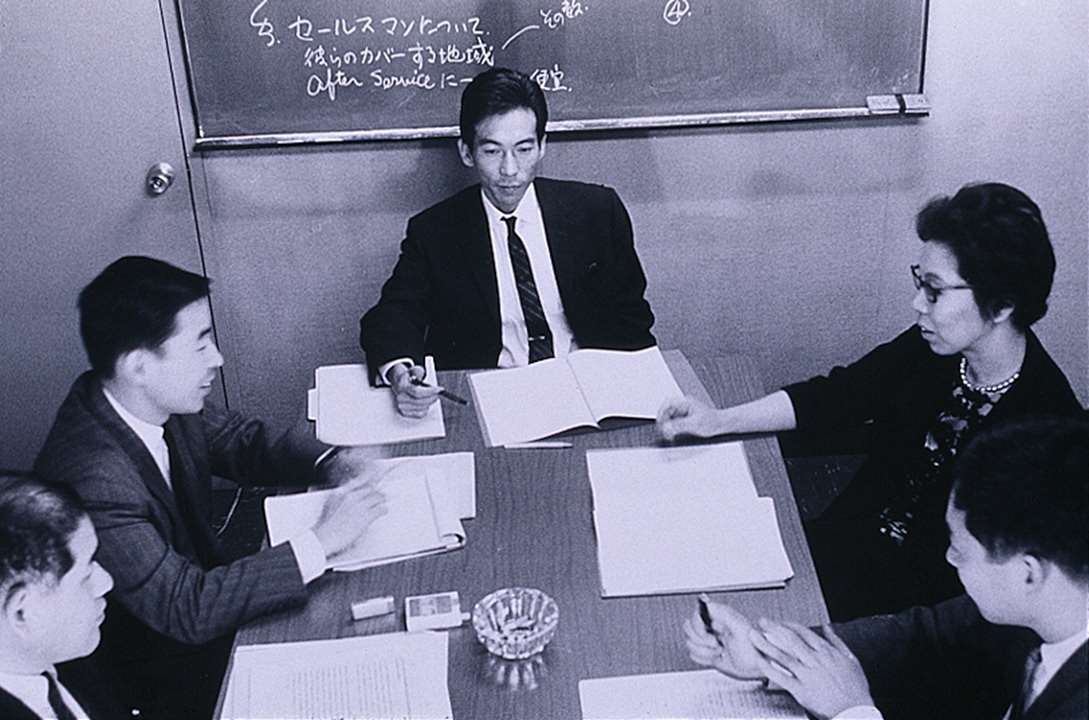
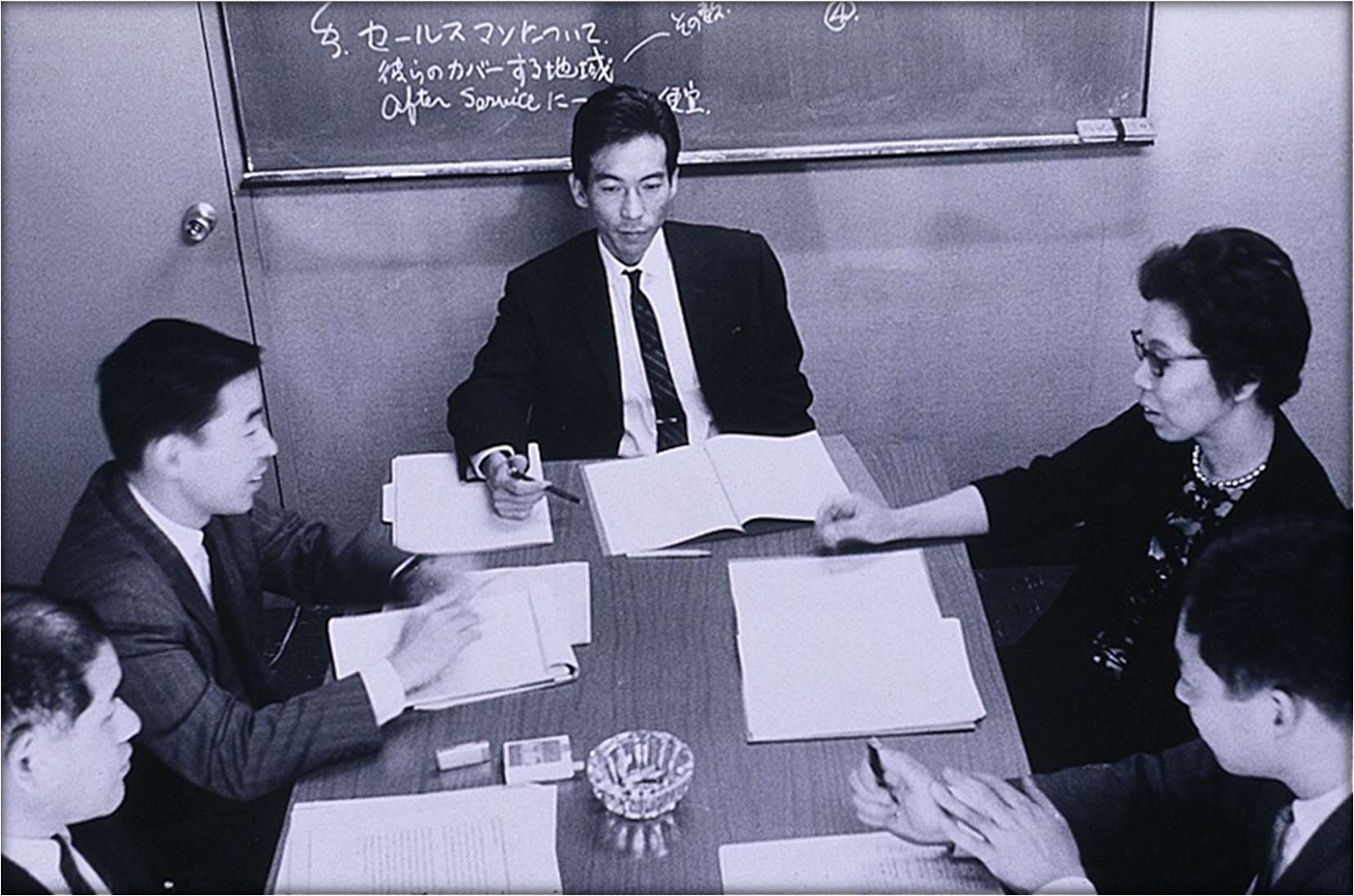
16
Keiichiro Sato at Cosmo Public Relations – 1960’s (Courtesy of Kumo Sato)
Kumi was a wealth of information. In addition to her managing Cosmo Public Relations, she is an alumnus of Wellesley College and has authored two books. She met Reiko a lot during her visits to Japan: She was such a unique person. My mother would fly her [Reiko] and her brother to Tokyo to stay with us… sometimes for months. She was very casual. She didn’t like getting dressed up, she didn’t put on makeup,
17
and she smoked. She lived very simply… she never bought or kept a lot of stuff because of it. My father adored her and was very protective of her. He was her older brother, and he certainly acted like it whenever he was around her.
Koji returned in the United States of America, having lost the ability to speak English while acquiring fluency in Japanese. He and Reiko took the opportunity to learn languages from each other. He regained his English skills, while Reiko learned Japanese. A hilarious anecdote is that Reiko used the “male” forms of a lot of Japanese terms as she learned it from another male. This led to a lot of confusion whenever she spoke with other speakers of Japanese.
18
Their post-war life seemed too good to be true, and it was, as Chieko was denied her property
-and only source of income- needed to support her daughter. After months-long hearings and appeals, Chieko finally regained her property.
Koji described his mother as being hardworking; she was somewhat wealthy, but only because she was hardworking. His loving relationship with his mother was a sharp contrast to Reiko’s turbulent relationship with her.
While finishing her secondary education, Reiko did her first nationally-recognized performance at Los Angeles’ annual Nisei Week at Koyasan Hall, where she entertained thousands of attendees by doing an apache-themed dance routine for the talent show titled “Slaughter on Tenth Avenue”. One of the spectators, Kats Kunitsugu, remembered
19
Reiko’s appearance as being a highlight when he was interviewed for Nisei Week’s 50th Anniversary:
I remember… Reiko Sato, the dancer. She was good. She did a number with Don Takeuchi that was really a production number… she had sex appeal.
After graduating from Belmont High School, Reiko was unsure about the direction of her life. Since dance was her only tangible skill, she enrolled at Los Angeles City College where she studied -in additional to Ballet- French. It was there that she met her lifelong friend Noel Robin.
20
Noel was one of Reiko’s closest friends. Even though they followed different paths in their lives, they remained close until she passed away. Noel knew everything about Reiko, and he was one of the few people with whom she trusted and confided her deepest secrets to. As she became famous, she’d invite him to parties and introduce him to some of Hollywood’s elites. Noel returned the favor years later as an ally of hers when he became a script analyst at Universal Pictures, the same studio where Reiko would star in two movies.
Reiko was my closest friend. I was the first person she contacted when she met Marlon Brando… when she was discovered by Jack Cole. Whenever she had a fight with her mother, she’d tell me about it. She was a beautiful person. The world lost someone special when she died.
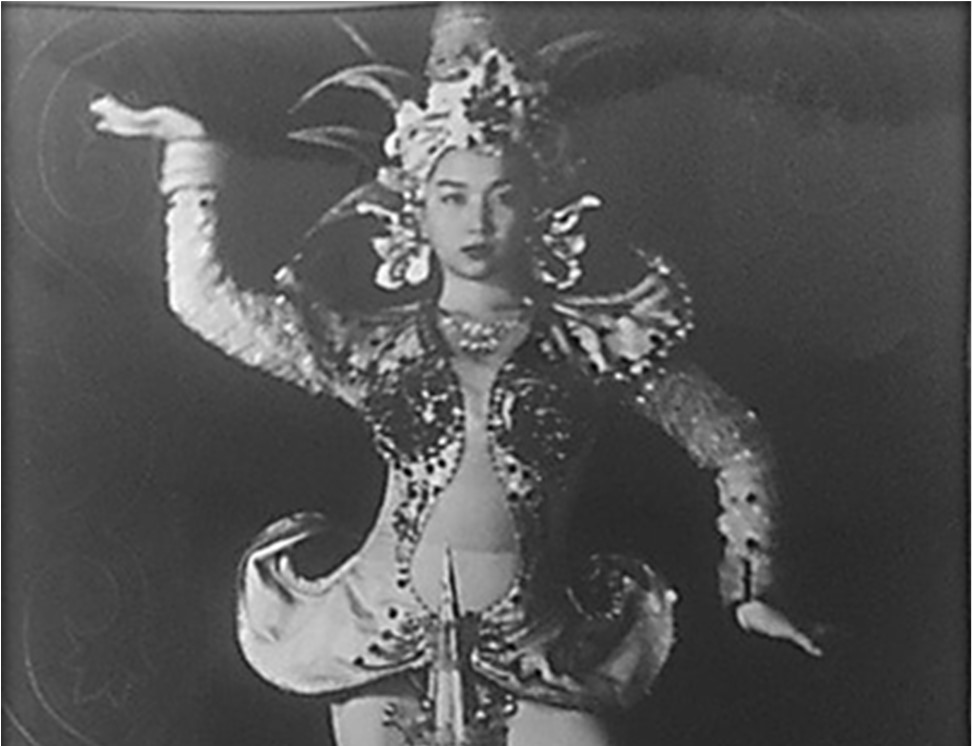
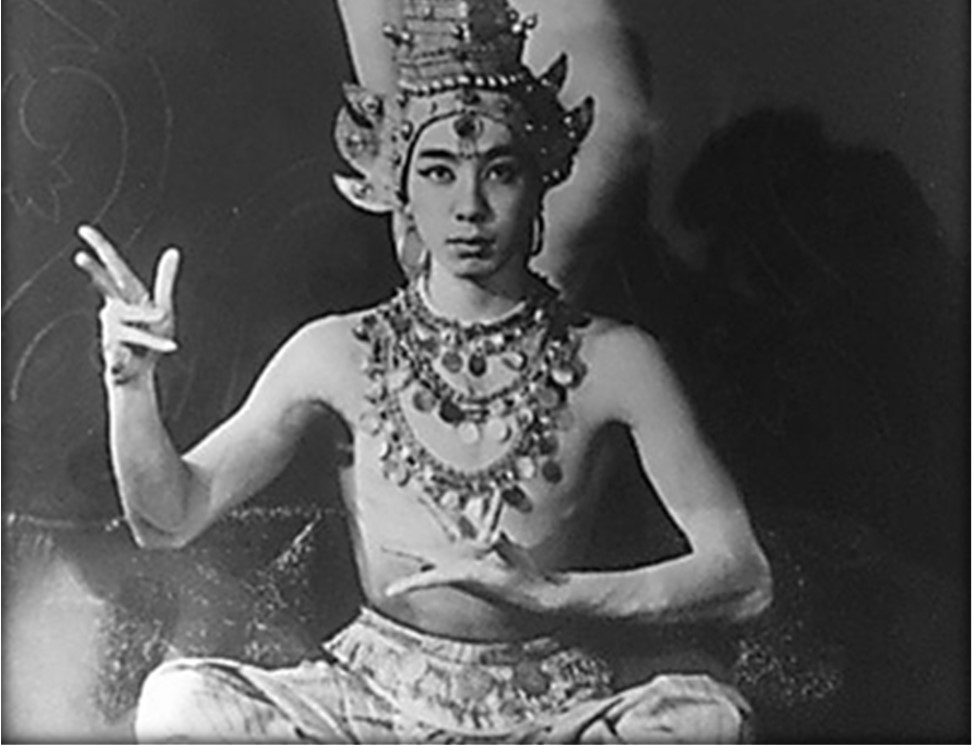
21
Reiko earned an
Associate of Arts within
two years. While Noel
urged her to further her
education at a
university as he planned
to do, her mother
preferred that she
pursue a career as a
dancer; that is exactly
what Reiko did. She
began auditioning for
everything she could. The
Reiko Sato and Don
“Keigo” Takeuchi – 1950’s
goal wasn’t fame, but
(Courtesy of Michael Takeuchi) independence.
22
Theater
Reiko’s first opportunity at stardom came when she auditioned for a revue at the popular restaurant Forbidden City in San Francisco.
She was hired immediately, and was quickly given the starring role with dancer Don Takenchi; with five dancers accompanying her onstage, she performed four nights a week.
San Francisco wasn’t foreign to her, as she stayed there a lot as child visiting relatives.
The sleaze, adultery, and gambling that she observed was foreign to her. She didn’t like the nightlife, and vowed to find better gigs.
23
She was chosen to be one of four featured dancers in The Noche Caribe Ballet’s production of Starlift, which starred Virginia Mayo. Since the memories of World War II and the disaster at Pearl Harbor were still in the minds of audiences, she was billed as a
“Korean-American” dancer to avoid alienating anyone interest in seeing the production.
As her career progressed, so did her training.
She began studying with Yuriko -whom she met years prior at an Internment Camp in Arizona- to enhance her skills in dance. It was an experience that she found rewarding but painfully difficult, as Yuriko was tough on her students. It paid off though, as Yuriko had a lot of connections in theater, and helped get Reiko a role that would change the trajectory of her career.
24
Reiko’s first forte on Broadway came when she was chosen by Jack Cole to appear in Kismet after having been recommended by Yuriko. Jack had spent weeks looking for a dancer to replace Neile Adams, who had planned to leave the production.
Ironically in her greatest onstage role, she sustained her first dance-related injury. While rehearsing with dancers Patricia Dunn and Bonnie Evans in the “Not Since Nineveh”
dance sequence, she landed the wrong way and broke her ankle. She made a fast recovery and continued with the show. Devra Kline was a dancer in Kismet, and she remembered Reiko’s unmatched talent:
Nobody else could do that choreography. We had a lot of dancers in the show, but none of them had the training, endurance, and
25
passion that Reiko had. We were very lucky to have her.
Reiko starred as Lotus Blossum in The Teahouse of the August Moon, based on a novel that was awarded a Pulitzer Prize. She starred opposite Larry Parks in a story focuses on life after World War II when the United States Military occupied Okinawa, Japan. It had been successful on Broadway a year prior, prompting producers to do a traveling production with a new cast. Performances too place at such venues as the Nixon Theater in Pittsburg, Pennsylvania, the Temple Theater in Birmingham, Alabama, and the Murat in Indianapolis, Indiana.
The production received rave reviews, with columnist Walter O'Hearn saying “her [Reiko]
dance is a triumph of restrained art.” Harold Whitehead praised her acting, writing that
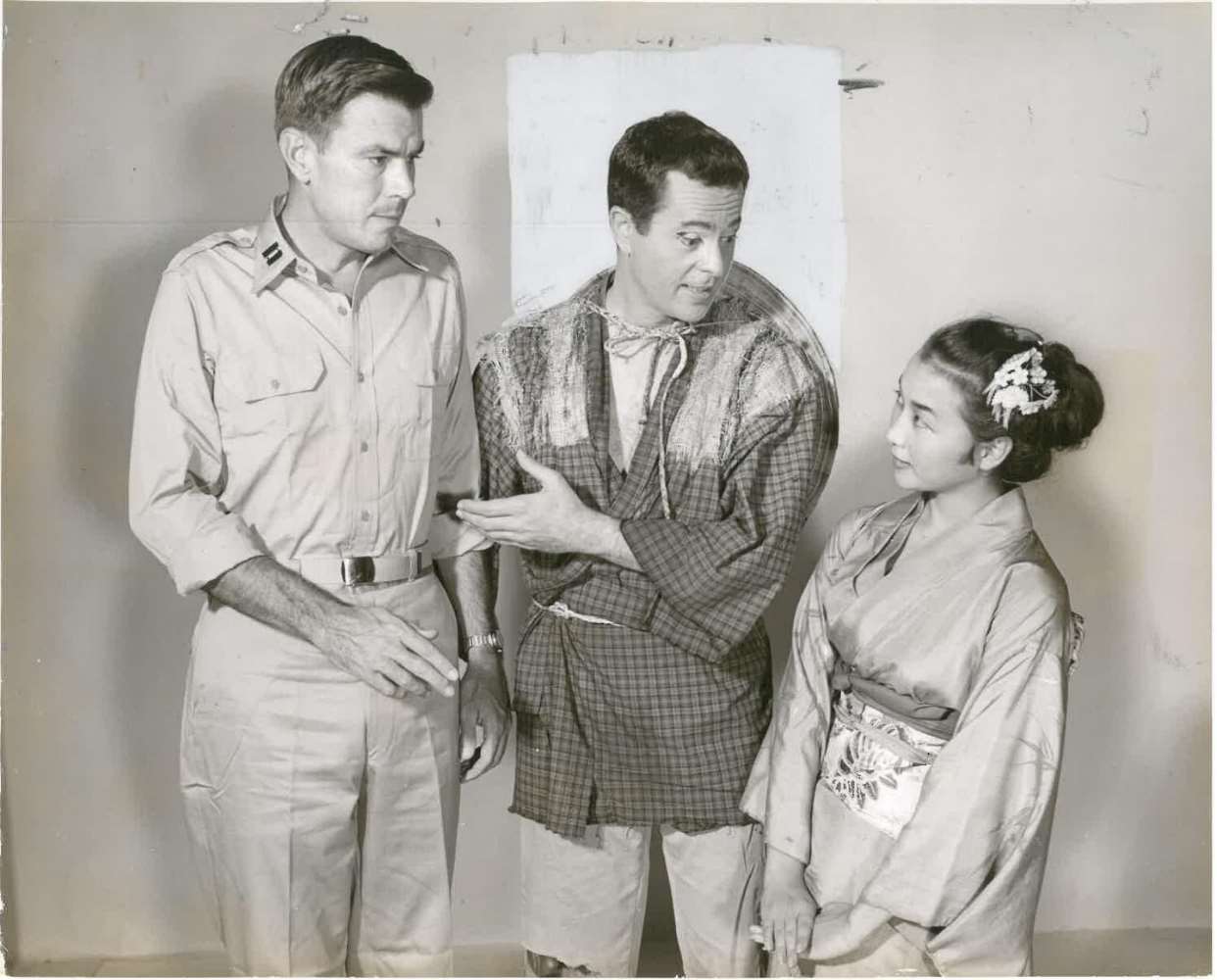
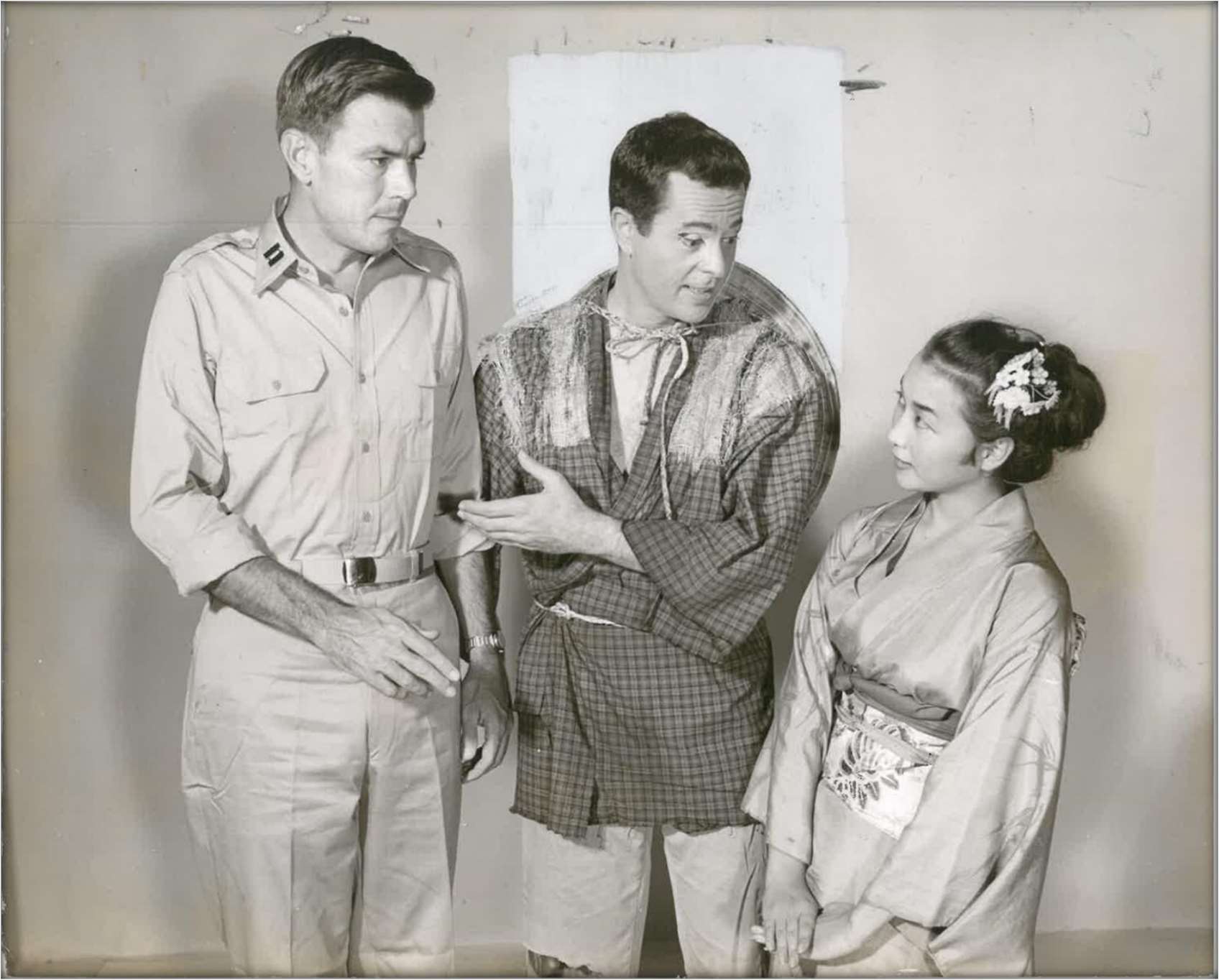
26
“Reiko Sato presented a charming picture as the village’s geisha girl.”
Reiko Sato, Larry Parks, and Thomas Coley in Teahouse of the August Moon – February 22, 1956
(Photographed by Eileen Darby) It was after finishing this production that she met Marlon Brando, who was preparing for a starring role in The Teahouse of the August Moon (1956). The stage production had been
27
so popular that it prompted an onscreen version to be done. Since Reiko had starred in the stage production, Marlon found it to be the perfect excuse to approach Reiko. He had been smitten with her since seeing her onscreen years ago and wanted to meet her, but they never crossed paths. In an effort to avoid the media, Marlon drove incognito -in a rented car- to Reiko’s apartment.
In casual attire not befitting of a star, he introduced himself. He told her that he was preparing to star in the aforementioned movie, and he wanted to learn how to portray an Asian-American person. Seeing through his ruse, she suggested that they dine and get acquainted. They had their first public outing at Burgess Meredith’s birthday party that year, and rumors began circulating that they were a couple. Among the numerous things
28
they had in common were their love for the arts, their courage in not caring what others thought of them, and their difficult childhoods and contentious relationships with their mothers. If she had any reservations about leaving Hollywood, her newfound romance with Marlon added to it.
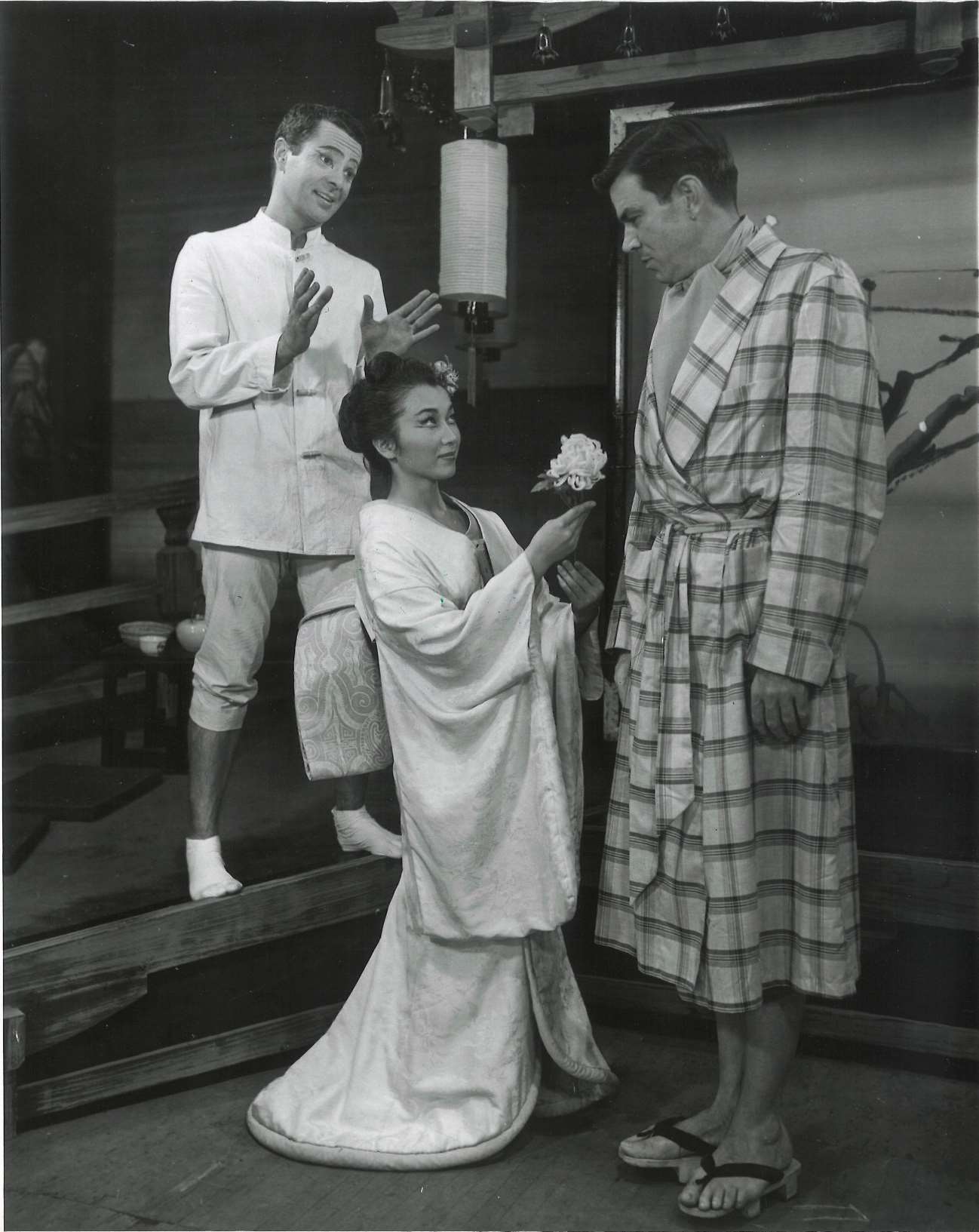
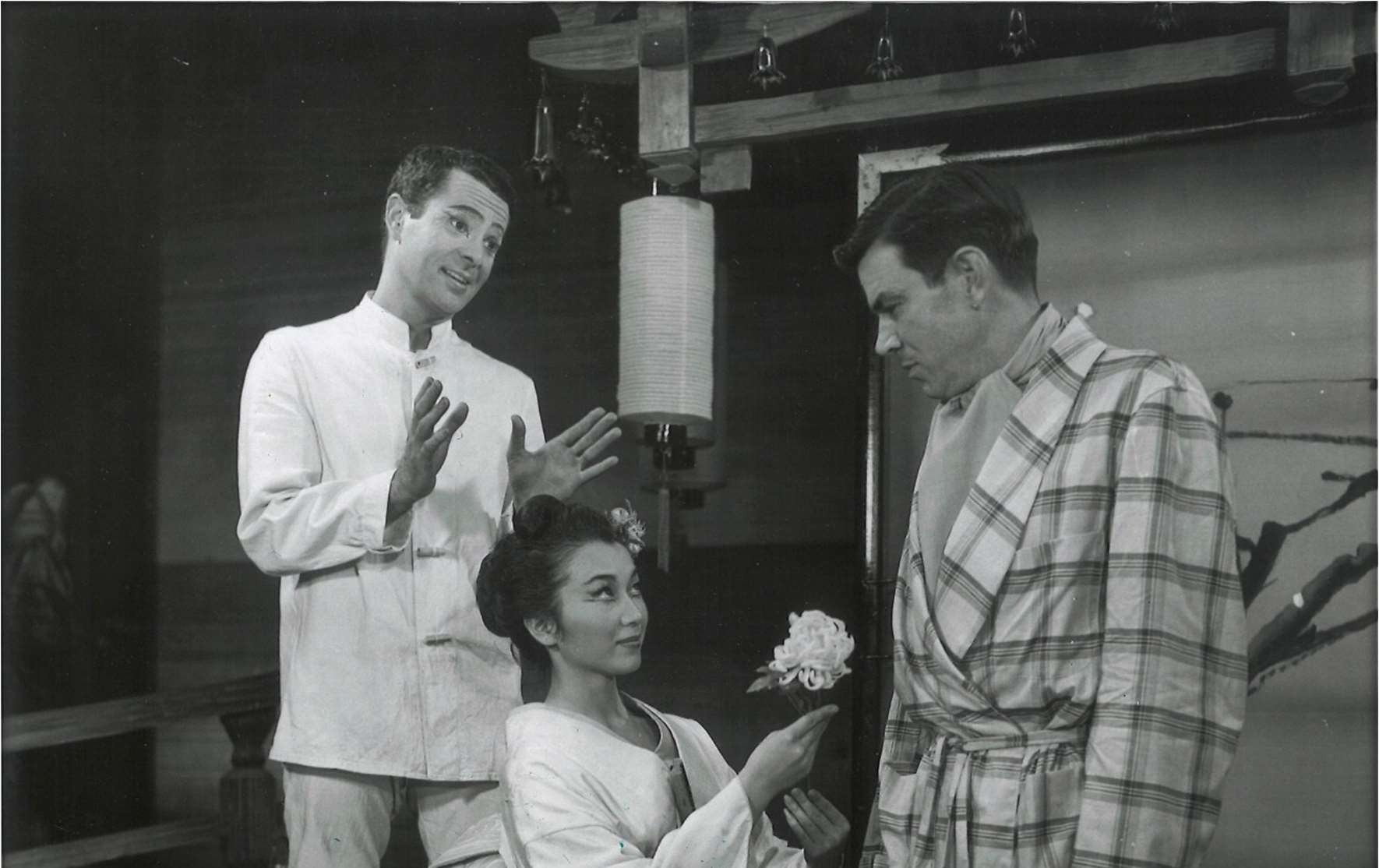
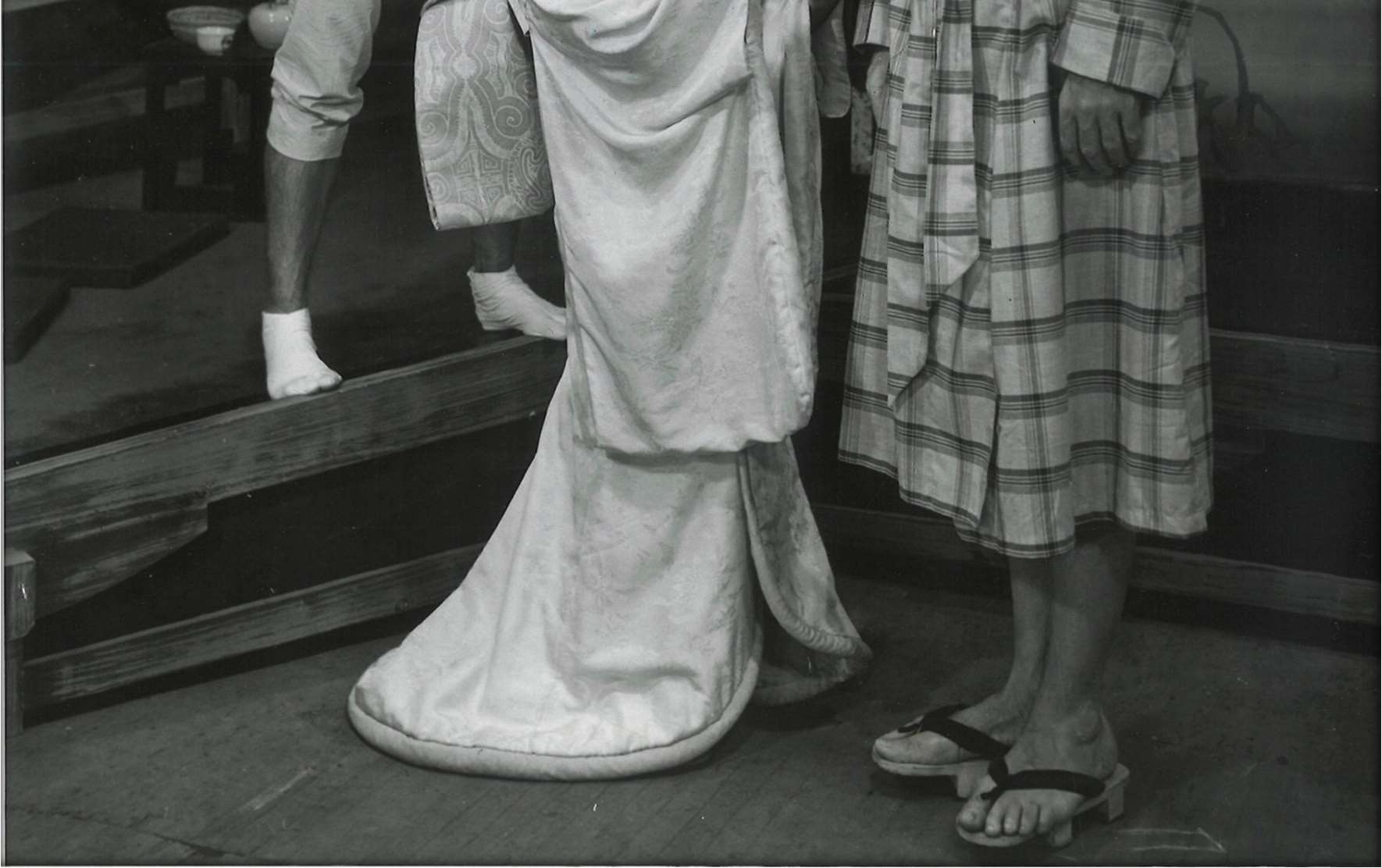
29
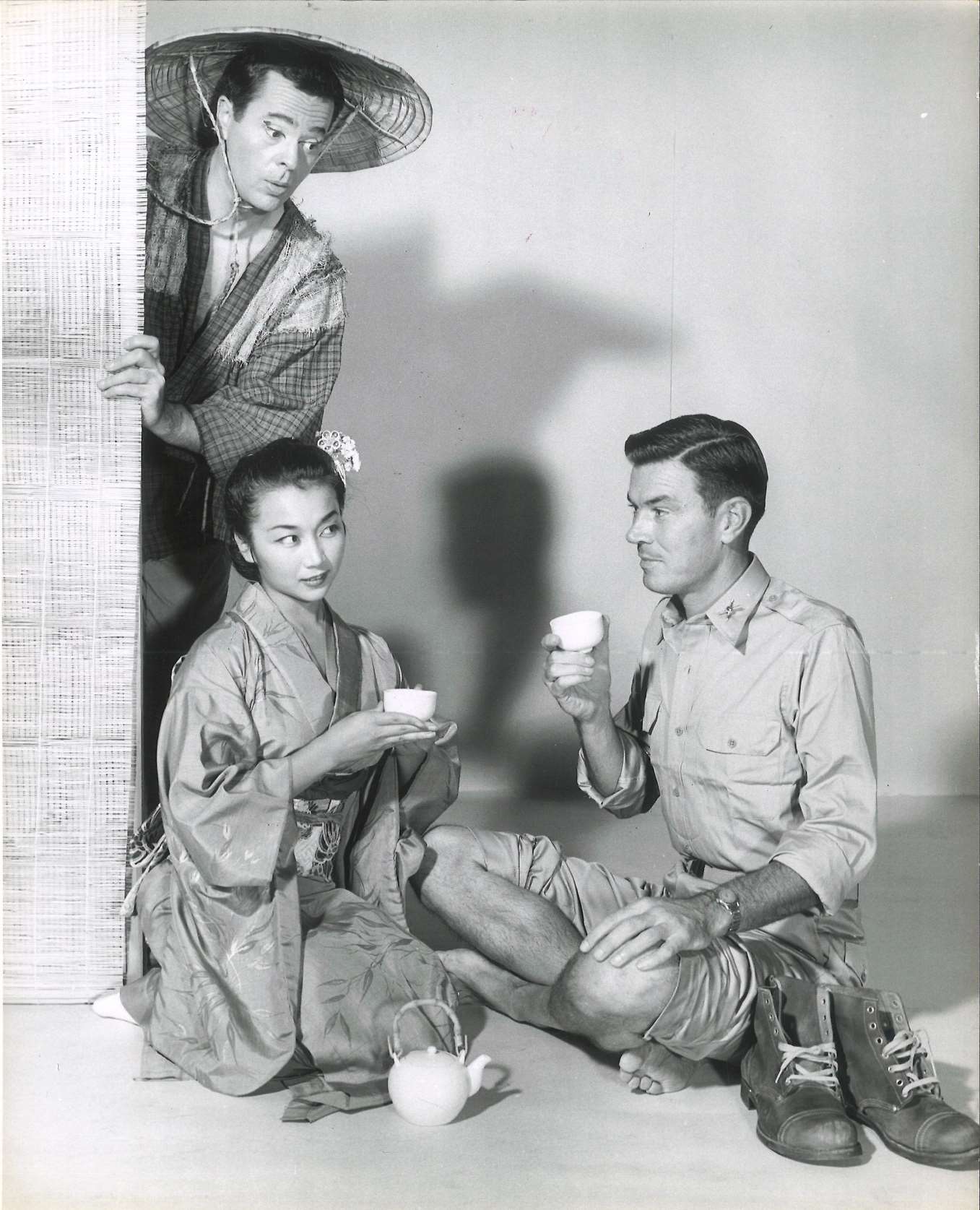
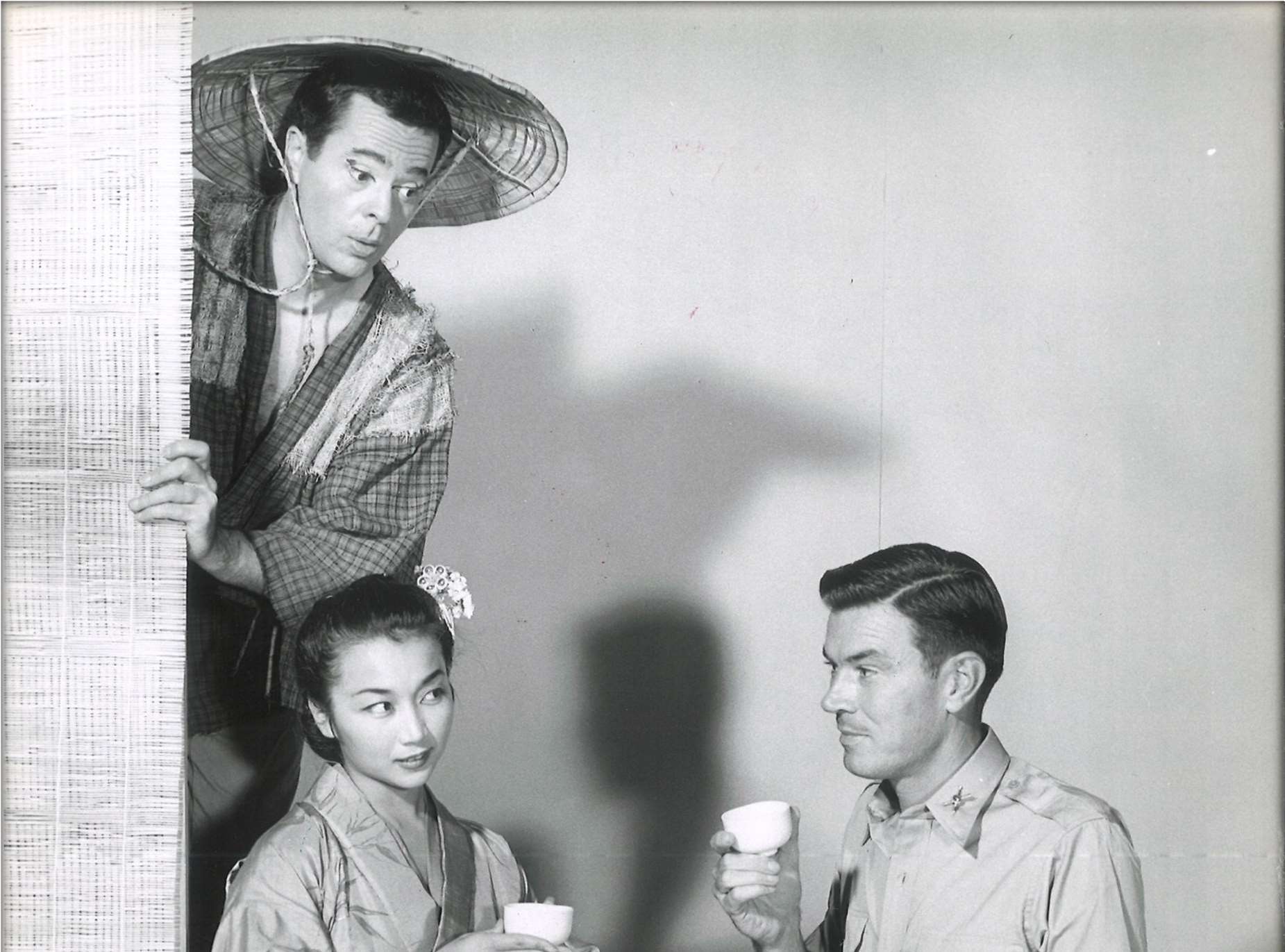

30


31
Although Hollywood had been fair to her, Reiko preferred performing onstage. There was more acceptance there. There was no typecasting, minorities were more readily accepted, and ageism was nonexistent. People were more ethical outside of Hollywood too, with men treating their female counterparts like colleagues rather than things. That being said, she loved Marlon and left Kismet to spend time with him in Beverly Hills. That is when her career onscreen launched.
Jack Cole was one of Reiko’s closes confidants.
They worked together a lot over the years.
She admired his expertise as a choreographer, and he appreciated that she was timely, professional, and reliable. Nobuko Miyamoto
32
provided a firsthand account of their closeness:
Reiko was one of Jack Cole’s favorites. He called her Baby-Bu, after the role she originated in Kismet as one of the three Princesses of Ababu. Reiko’s body was perfect for Jack’s work. Barely five feet tall, she had broad shoulders, full breasts, strong core and legs, and tiny, beautiful, tough feet.
She was a sexy samurai who adored Jack and would jump off a cliff for him if he choreographed it.
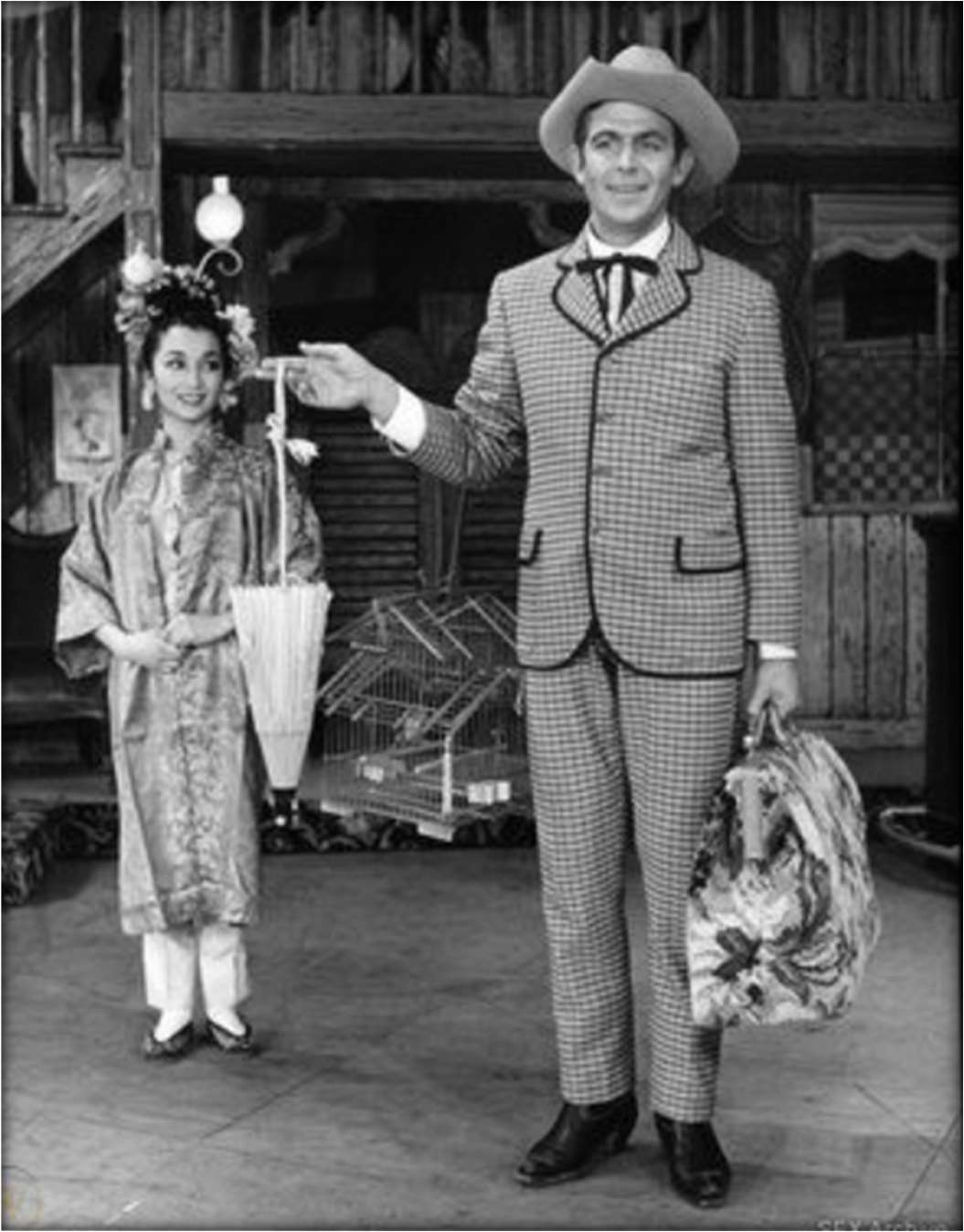
33
After finishing Kismet,
Reiko took a 4-year
hiatus from performing.
She became more
acquainted with
Marlon Brando while
they traveled around
the world. Reiko missed
dancing, and she
returned to New York
to audition. Destry
Rides Again at the
Reiko Sato and Andy Griffith in Destry Imperial Theater
Rides Again – 1959
(Photographed by Friedman Abeles) would be her next
performance, where she was reunited with former co-star Dolores Gray from Kismet (1955). She portrayed Ming Li, an escort who happens to be a great dancer. The show premiered on April 23, 1959 and won the Tony
34
Award for best choreography. After 472
performances, the show concluded and Reiko returned to Hollywood.
35
Hollywood
Although Reiko wasn’t as successful in Hollywood as she had been onstage, it gave her more exposure to elites who could get her to more opportunities for stardom. She landed a role in On the Town (1949) as a dancer, where she rubbed elbows with stars like Gene Kelly, Ann Miller, and Frank Sinatra.
She got her first legitimate acting role a year later in Mother Didn’t Tell Me (1950) after a last-minute casting call. She played Suki, a part-time maid. She demonstrated a knack for comedy in what would be a successful feature for 20th Century-Fox. Aggie McCarty, a
36
famed critic, praised her performance by stating that “Reiko Sato as a part-time maid, who openly adores the doctor, squeezes in a few minutes of comedy wherever there is a spot in the already fast-moving, gagged-up plot.” Seeing her potential, Fox signed Reiko to a contract. Unfortunately, nothing further was offered to her by the studio and she remained idle. It was that same year that she would finally be discovered.
The discovery came from an unlikely source.
Ann Sheridan, an actress, was signed for Woman on the Run (1950). It was a mid-tier drama, and Ann -as an actress turned talent scout- was responsible for the casting decisions. She was on location in San Francisco for rehearsals when she saw Reiko dancing at a restaurant called Forbidden City, which was a popular location for Asian
37
Americans. She offered Reiko the part of Suzie, a nightclub singer who is murdered after learning confidential information about a mafia. Ann had to persuade the movie’s producer, Howard Welsch, to re-write the part as a dancer because of Reiko’s lack of experience in music. 20th Century-Fox agreed to loan her, as they didn’t have anything planned for her.
She was billed as Rako Sato, and publicized by the studio as being a Chinese-American star. The tensions between the Americans and the Japanese had barley deescalated after World War II, so the studio thought she’d be more appealing to audiences if she was of Chinese descent. Her role consisted of doing pliés before having a brief conversation with
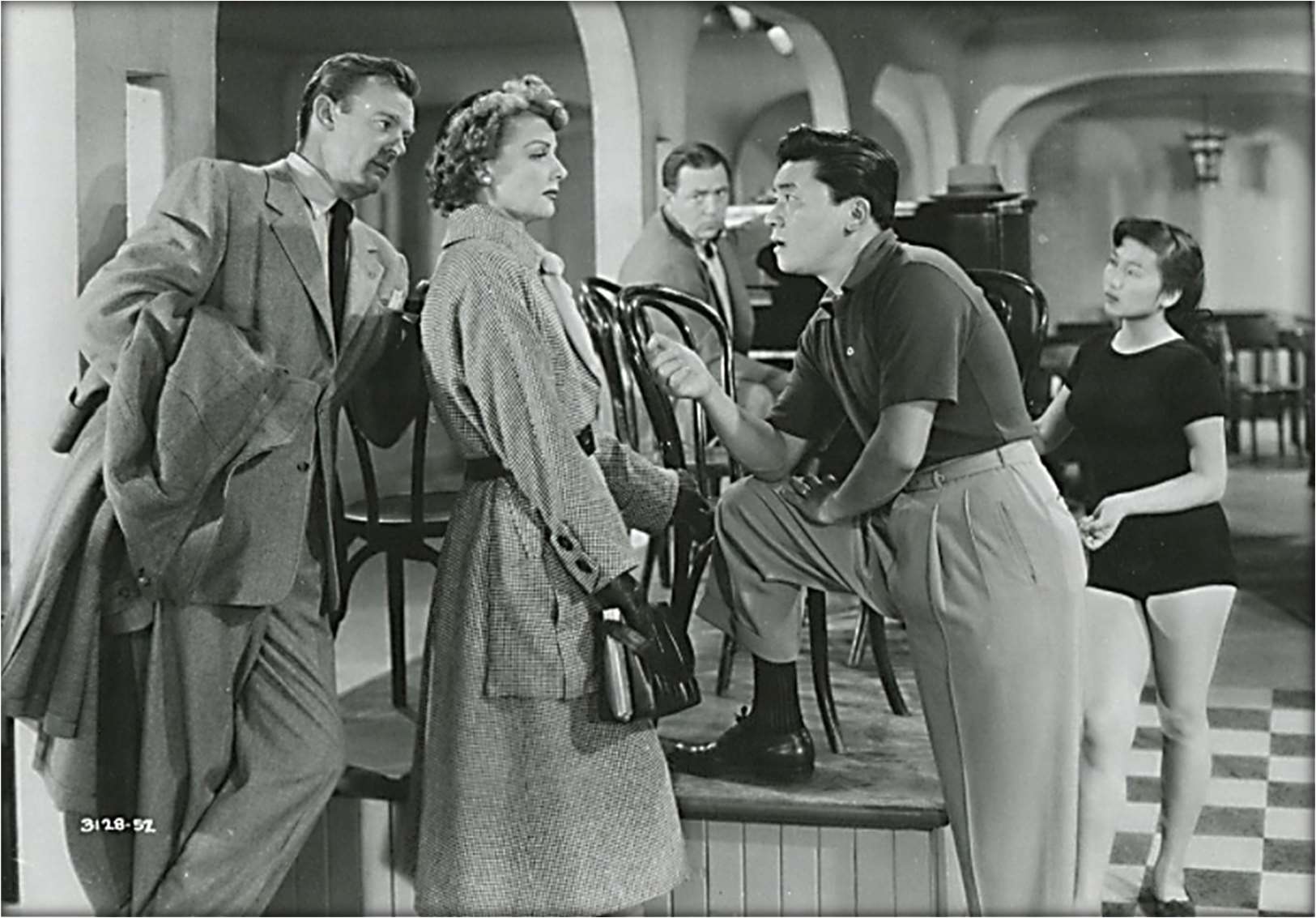
38
Dan Legget, who was portrayed by Dennis O’Keefe.
Reiko Sato, Victor Sen Yung, Ann Sheridan, and Dennis O'Keefe in Woman on the Run (1950) Although her performance was by no means Oscar-worthy, it was respectable enough garner more roles for her. It proved to Hollywood that she was -at the very least- a credible actress. Although she was by no means great as an actress, she was competent
39
and convincing considering she had no formal training. She gained a lot of good connections though, and she used those connections to fulfill her mother’s dream of appearing onscreen; in 1952, Chieko Sato was given a role in Japanese War Bride (1952) where she played a servant.
Reiko secured an agent, Mary Reeves, and she was able to get better parts and paychecks.
She landed a role on a half-hour drama called The Juice Man where she co-starred with Keye Luke in a story where gamblers bride corrupt politicians. It would be her first leading part in her career. She was then offered to guest star on the sitcom My Little Margie, but the part was written from the script before filming began. She was then offered a role on an episode of The Files of
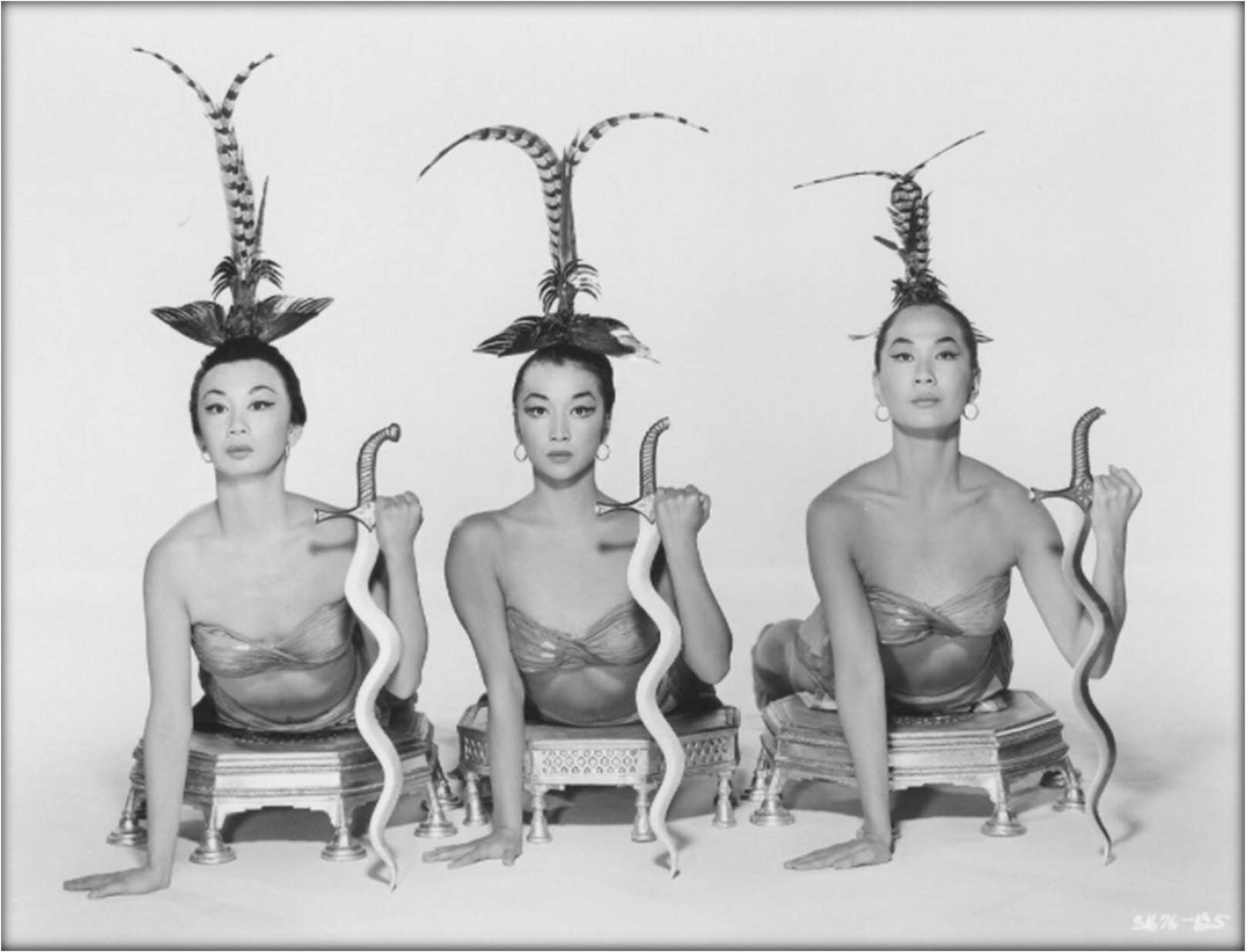
40
Jeffrey Jones, but she couldn’t accept it due to scheduling conflicts with a nightclub act.
While Reiko was starring in Kismet onstage, she remained active onscreen, commuting between New York and Los Angeles frequently. She had walk-on roles in Target Hong Kong (1953) and House of Bamboo
41
(1955), the latter being filmed in Tokyo, Japan. Although she was happy not to be typecast as a dancer, she was unhappy that she wasn’t given dialogue. She decided to part ways with Hollywood temporarily and shifted focus to Broadway, which was a good decision as her performance in Kismet was given rave reviews in the sequence “Not Since Nineveh.”
Jack Cole asked Reiko to reprise her role as the Princess of Ababu in the filmed version of Kismet (1955). She was reluctant, but agreed after the Mary Reeves Oriental Casting Service -who represented her- negotiated with producers to finance her relocating from New York to California. It was like a dream come true starring in a Metro-Goldwyn-Mayer production alongside Howard Keel, Ann Blyth, Dolores Gray, and Vic Damone.
42
She was reunited with Patricia Dunn from the stage version, and was delighted to meet Wonci Lui as Bonnie Evans was not cast because the studio wanted the princesses to be Asian; they even launched a campaign where they advertised the three actress as descending from different regions of Asia: Reiko from Japan, Patricia from South Korea, and Wonci from China. The movie did not match the success of the stage production, and it was a loss for the studio. It was one of Reiko’s most notable roles to date though. Her co-star, Barrie Chase, liked her a lot: I never got to do any scenes with her [Reiko], but we got very friendly on the set. Everybody, and I mean everybody, liked her. She would show up and do the work, and do it well. She didn’t get involved with any drama backstage, and she was one of the few women in
43
Hollywood who wasn’t catty. I remember between tapings, I approached her backstage to chat, and she was sitting cross-legged and reading. She told me that she had something interesting to tell me… and oh my goodness, I was one of the first people whom she confided in that she was with Brando.
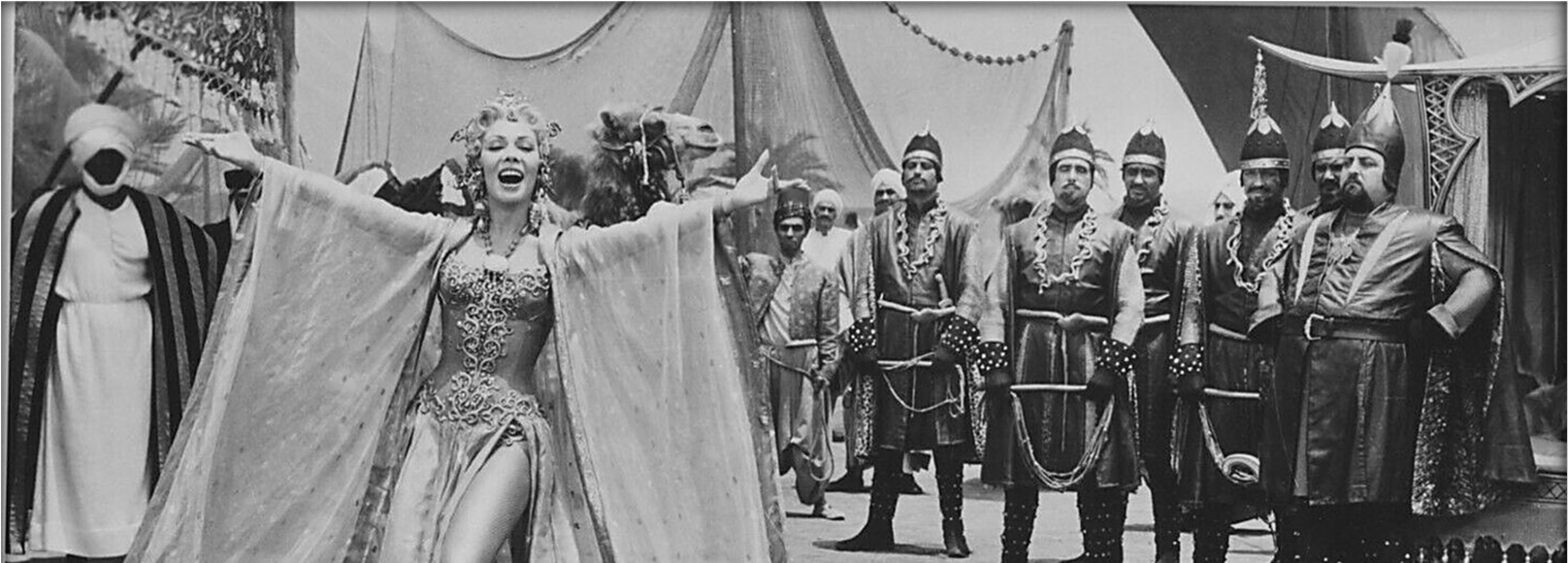

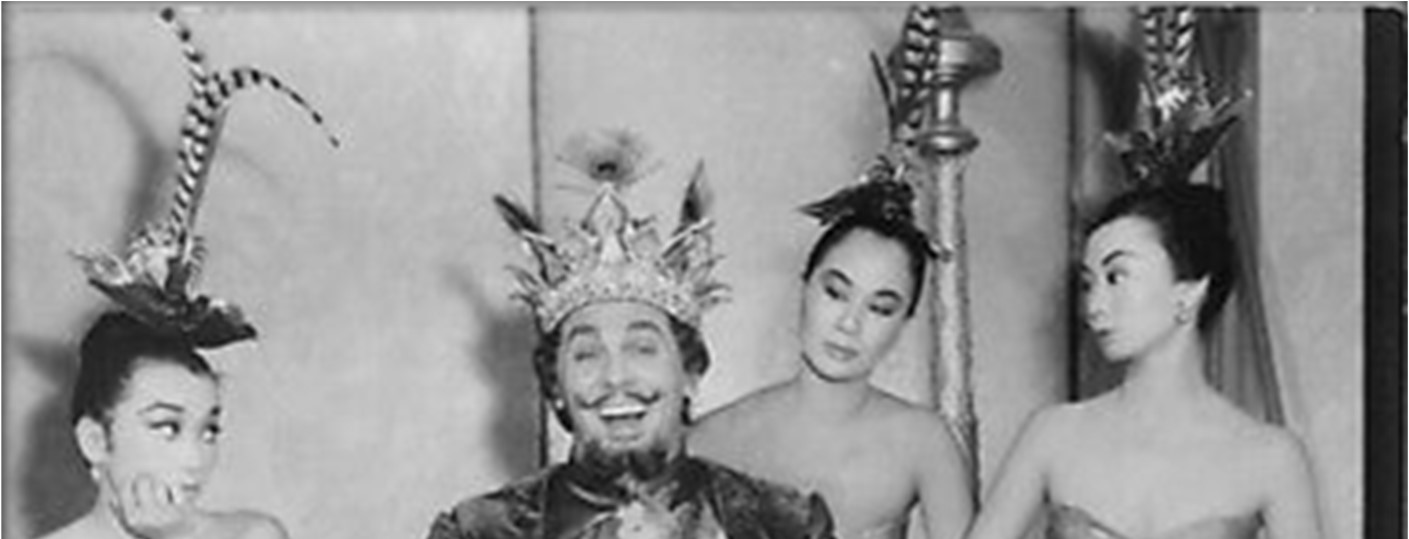

44
Reiko Sato, Dolores Gray, Howard Keel, Wonci Lui, and Patricia Dunn in Kismet (1955)
45
Reiko’s career was on fire, as she had six movies and several stage productions on her resume. In 1960, she guest starred on the popular television series Johnny Midnight in an episode titled The Tokyo Doll. Reiko played a dancer named Mitsu Kyoto who is murdered, but not before handing a photograph to the title character saying “The photograph… take the photograph.” She was billed as “Reike Sato” due to a typo in the credits, and it was her second role in which she played someone who was later murdered.
This was followed by an appearance on the series Hawaiian Eye, where she - played a cashier who was given a counterfeit $20 bill and reported it her supervisor. Her opening line was “Mr. Steee, we just got one of his counterfeit twenties… we’re holding him.”
She knew that her -often forgettable- roles on
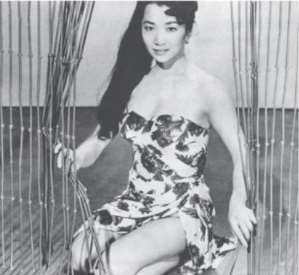

46
television would lead nowhere, but a good paycheck was enough to entice her.
That year, Reiko flew to
Okinawa, Japan to star in
Hell to Eternity (1960)
starring Jeffrey Hunter
and Davis Janssen. It was
staged in post-depression
Los Angeles during World
War II, which was
something that Reiko could easily relate to.
She played Famika, a Polynesian exotic dancer who entertains the soldiers. It was a prominent role, and she was featured in the movie’s trailer. It was a hit, earning $2,800,000 on a budget of $800,000. Although her role was brief, it was enough to garner the attention of a talent scout who would change the course of Reiko’s career.
47
Universal Pictures
Being rediscovered by a talent scout for Universal Pictures breathed life into Reiko’s career. A comparatively smaller studio in the 1960’s, they were looking to revamp by signing new faces to their lineup of actors.
Hollywood had become readily more accepting of Asian-American performers with successes like The World of Suzie Wong (1960), so Reiko was exactly who they were looking for.
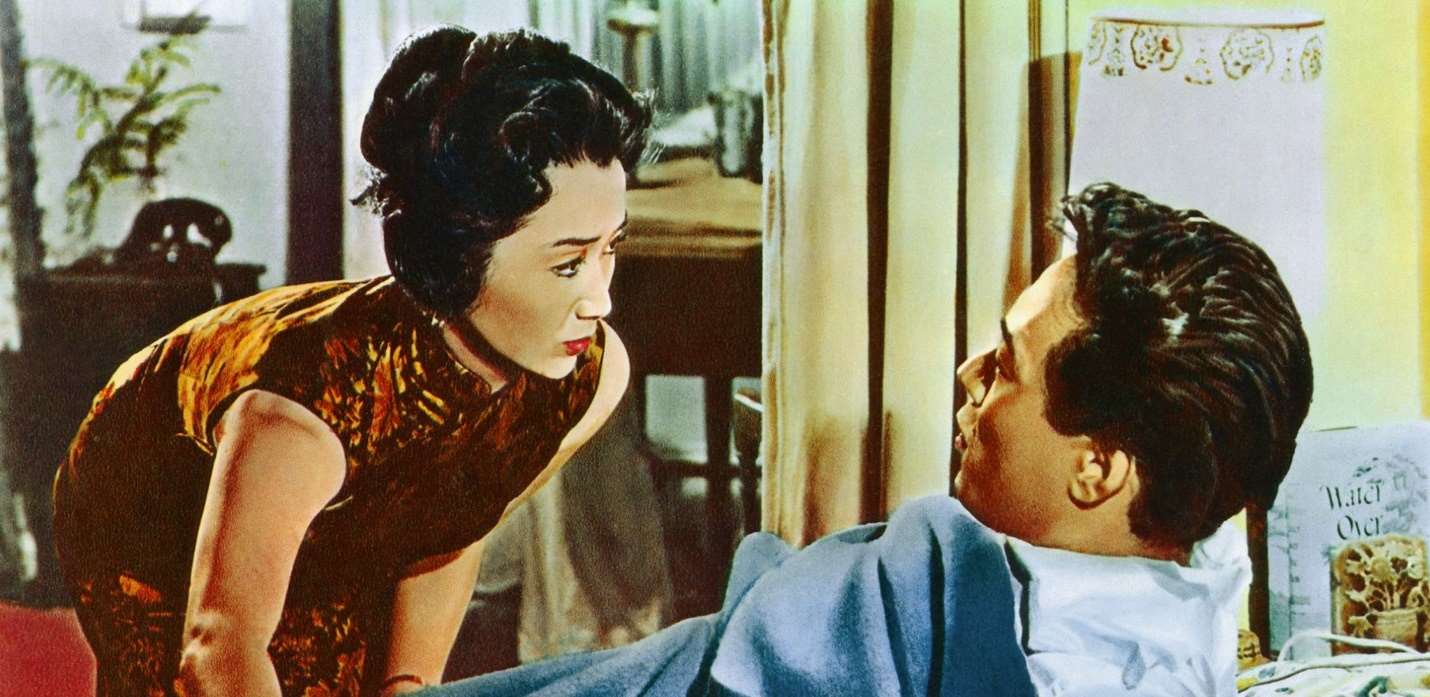
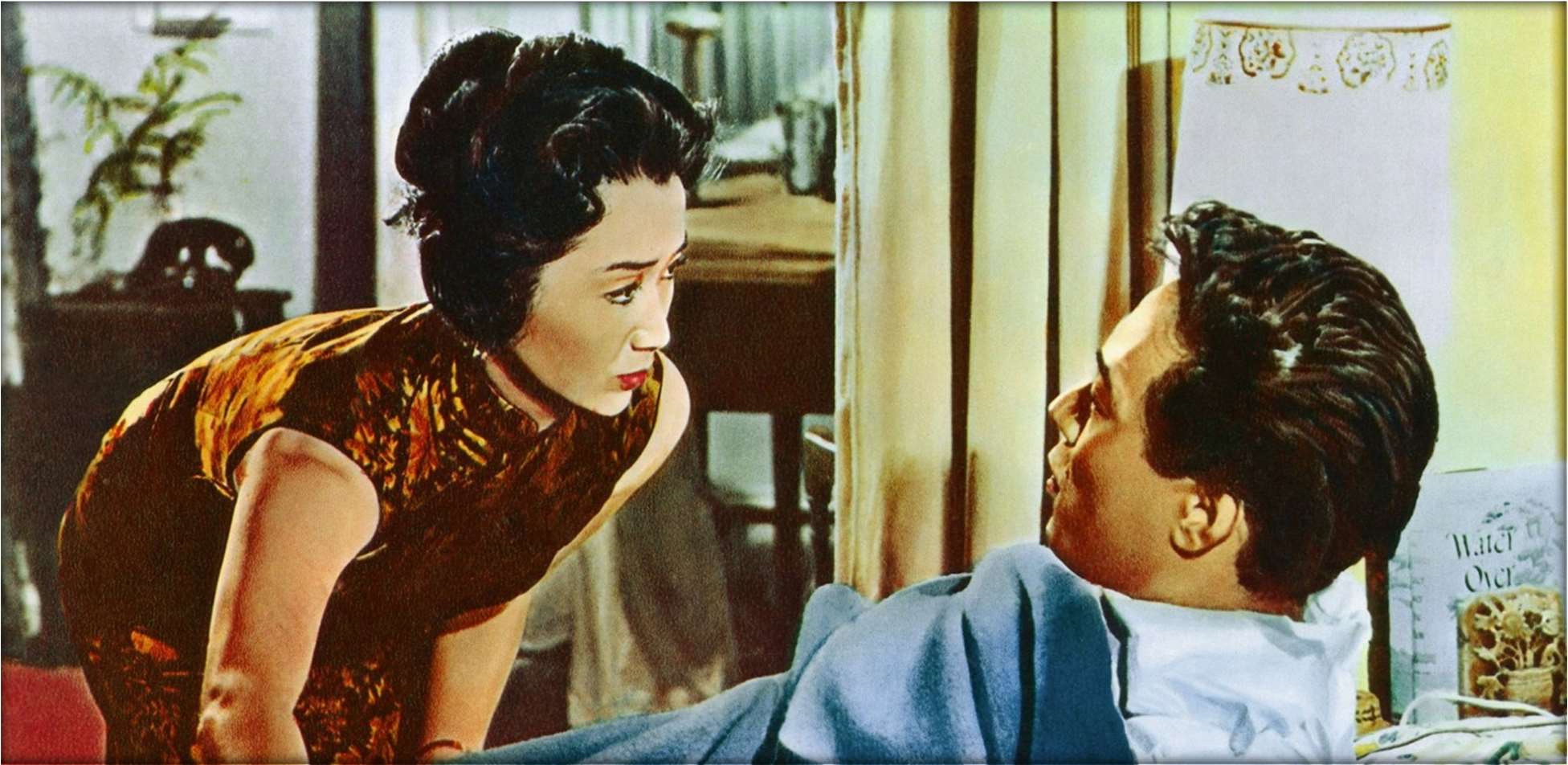
48
Of everything that Reiko Sato did in her career, she is best known for her role as Helen Chao in Flower Drum Song (1961) starring Nancy Kwan and James Shigeta. In was the first movie to feature a cast entirely composed of Asians, and it had been an immense hit on Broadway years prior.
The role of Helen Chao was immensely different in the script than it had been in C.Y
Lee’s novel. The novel depicted the character as being ugly, disfigured, and suicidal, while
49
the script was more lighthearted and positive with her being portrayed as beautiful in a dance choreographed by the renowned Hermes Pan.
Although she wasn’t considered the star of the movie, she was one of the most prominent of the supporting cast. She got an opportunity to showcase her acting ability, appearing in various scenes as the city’s go-to seamstress in a subplot where she fell in love with Ta. She had the most memorable and elaborate scene, Love Look Away. Rogers & Hammerstein were notorious for giving the greatest musical number to a lesser-known character, and it proved to be no different in Flower Drum Song (1961).
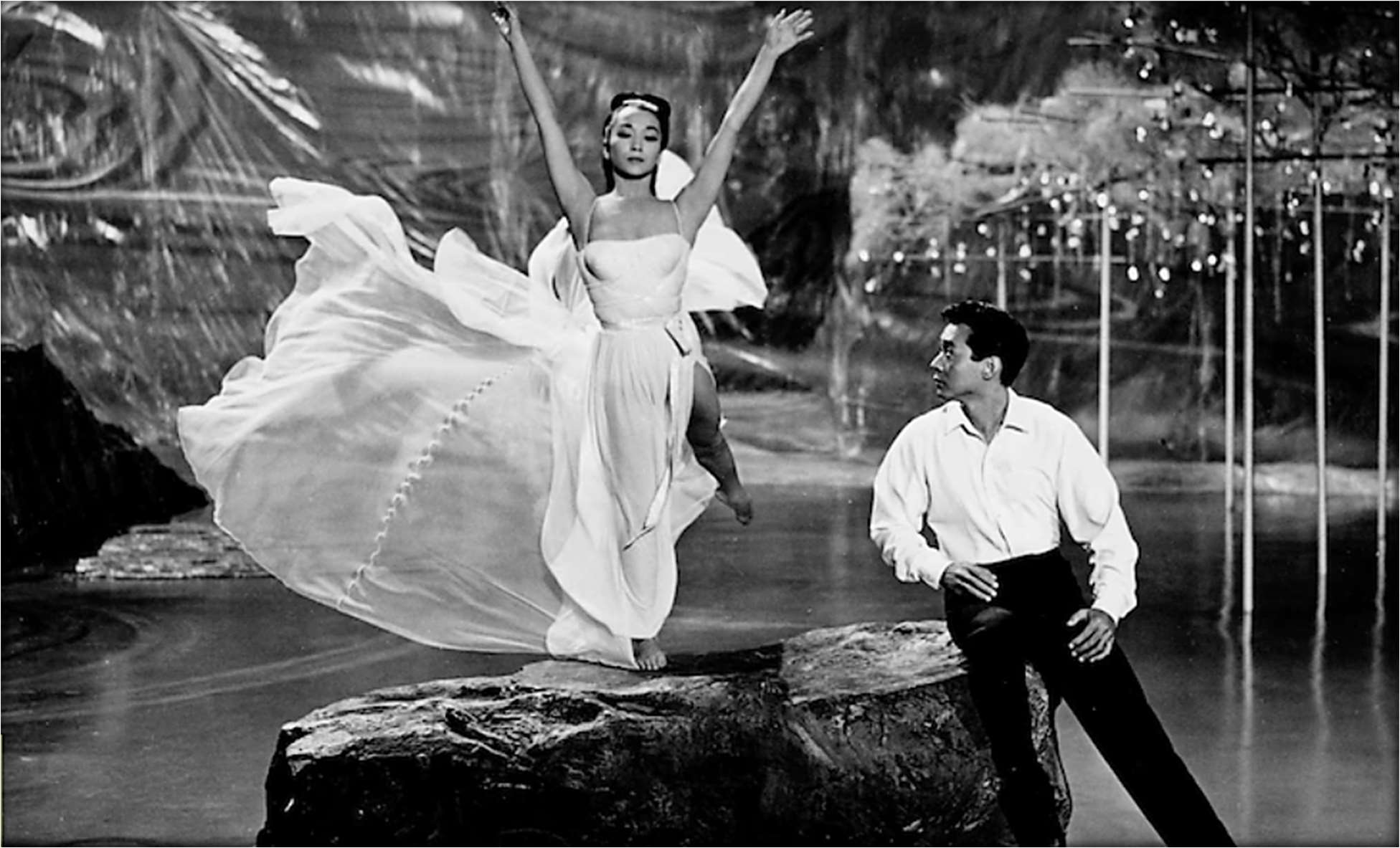
50
Although her voice was dubbed due to her inability to sing in an operatic tone, she danced flawlessly. The director, Henry Koster, was pleased with her performance, saying in his autobiography that “… They [the actors]
were all the best known here… and I had a marvelous ballet dancer, Reiko Sato.”
51
The premier on November 9, 1961 at the Radio City Music Hall was a star-studded event with a-list attendees who weren’t even affiliated with the production. Reiko was unfazed with the fact that she graced the premier with stars like Janet Leigh, Nick Adams, and Tina Louise. She sat by co-star Jack Soo as the screening began, and she was proud of what she accomplished.
One of Reiko’s closest friends during filming was Nancy Kwan, who had achieved stardom a year earlier in The World of Suzie Wong (1960). Nancy was a dancer like Reiko, so they shared a lot in common. In an interview with Nick Redman in 2006, Nancy recalled the joy
52
of starring alongside Reiko: She was a wonderful dancer. She sang my favorite song in the whole film, “Love Look Away”. I liked her a lot. We got to know each other very well… and she passed away much too young.
Her co-star Patrick Adiarte was fond of her too:
Ironically, I didn’t get to know her well until after we finished filming. We weren’t in a lot of scenes together. We would meet at parties and occasionally for lunch. The Asian-American community in Hollywood was very close, so everybody knew everybody. In other words, I ran into her a lot. She lived a hard life, but did just fine. I had a lot of respect for her.
53
The reviews were positive. Newsweek said that Reiko “manages to stand out simply by not playing her part as if she had to prove she was Oriental” while Box Office called her
“praiseworthy” and Shin Nichibei said that she “proves surprises.”
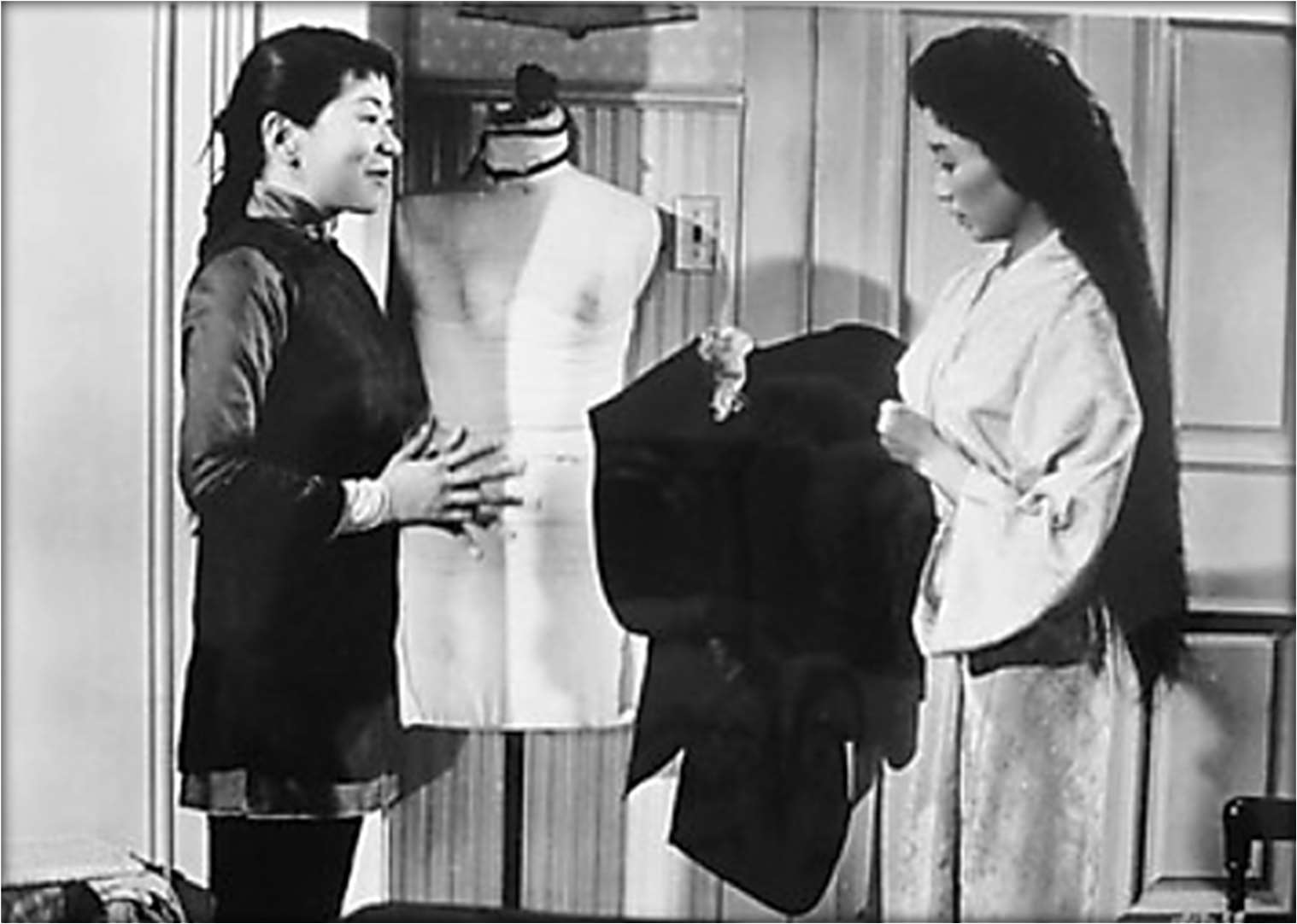
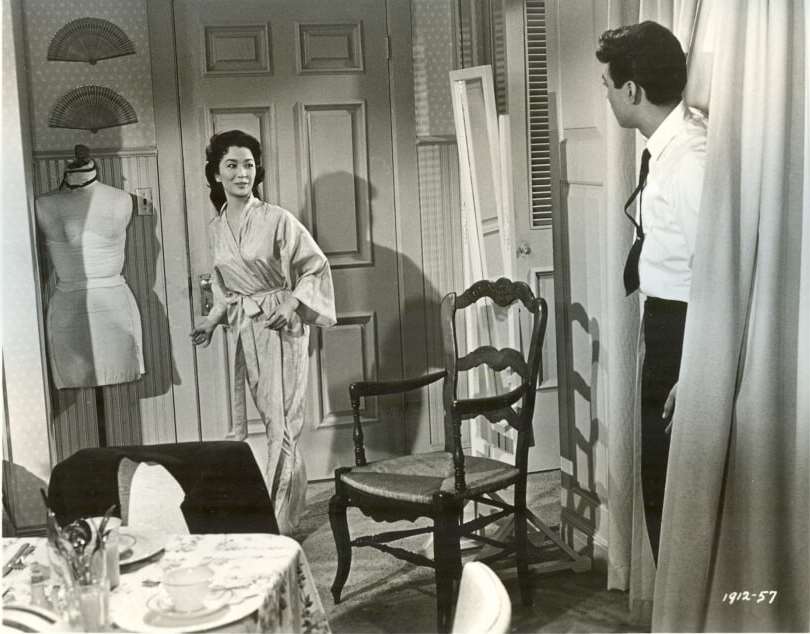

54
Reiko Sato, Myoshi Umeki, and James Shigeta in Flower Drum Song (1961)
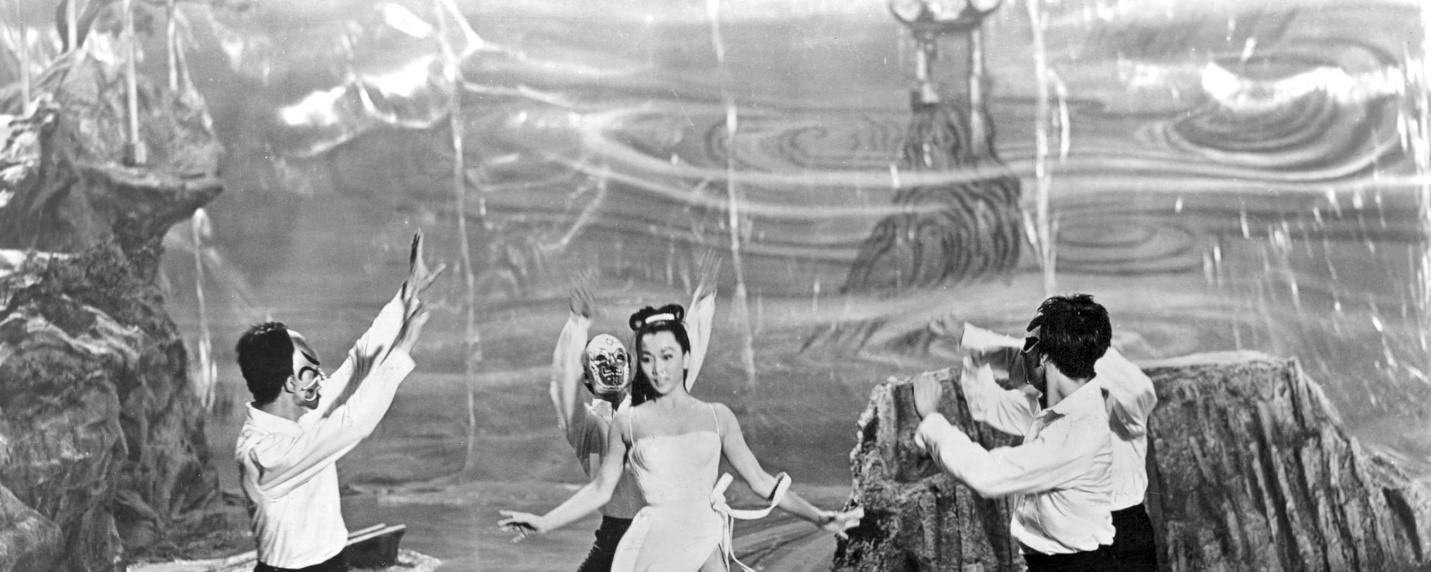





55
56
Universal Pictures has planned to give Reiko the typically buildup of an actress. They’d start her in supporting roles as they did in Flower Drum Song (1961), gradually casting her in larger roles. That didn’t happen due to changes in the trends of audiences as well as a lack of enthusiasm from the studio’s executives about Reiko’s potential among mainstream audiences.
Reiko’s last onscreen role was as Rachani (Deong’s loyal wife) in The Ugly American (1963), starring her former flame Marlon Brando. It was a rare opportunity for audiences to see her in a role where she didn’t portray a dancer. Marlon urged executives at Universal Pictures to approve her for this role, but they were concerned by her lack of abilities as an actress. He assured them that
57
this wasn’t an issue, and that he would personally coach her throughout the filming.
As filming continued, Reiko’s character expanded with additional pages of dialogue being added. This was a bit insulting to Marlon’s wife Tarita Teriipaia, as the role was originally written for her yet only expanded when it was given to Reiko. She developed a convincing accent, which was necessary considering the script took place in Southeast Asia. Unfortunately, a lot of her scenes -
including a pivotal scene where she confronts Amassador MacWhite- were deleted from the released version as they didn’t add to the story. A memorable scene was where Rachani kneeled in front of Ambassador MacWhite, saying “Welcome to our home.” This was followed by her and Brando gazing at each
58
other in what was anything but acting, showing their genuine admiration for each other in front of millions of viewers.
The Ugly American (1963) was a critical and financial success, which -if possible- propelled Marlon Brando to further stardom. It didn’t do much for Reiko though. She was neither panned nor praised for her performance, with not one syndicated columnist finding it noteworthy enough to write about it. It’s not as though she and Marlon didn’t make an effort, as they certainly did everything that they could to turn her into a star. A reason for the lackluster reception could’ve been because her performance paled in comparison to that of Flower Drum Song (1961), where she demonstrated a broader range, more confidence, and skills like on-demand crying
59
that were normally reserved for the greatest actors. She seemed more nervous, reserved, and unsure in The Ugly American (1963), perhaps struggling to cope with the fact that this could launch or end her career onscreen.
Sadly, her career onscreen wrapped up as Universal Pictures ended her contract. She never appeared in another movie, but continued to do sporadic appearances on television. Reiko had planned an independently-made movie focused on Asian-American suffrage titled Now It Can Be Told where she would star, but the production ran out of funding and it was never completed.

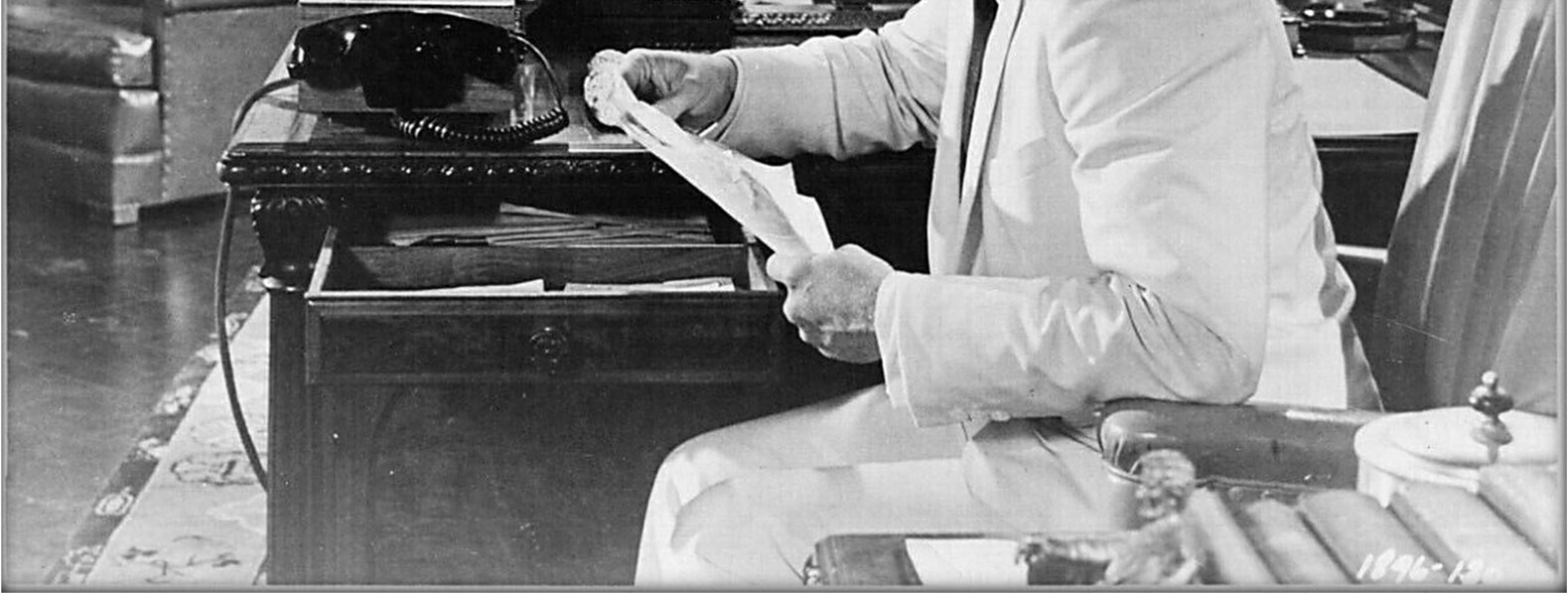
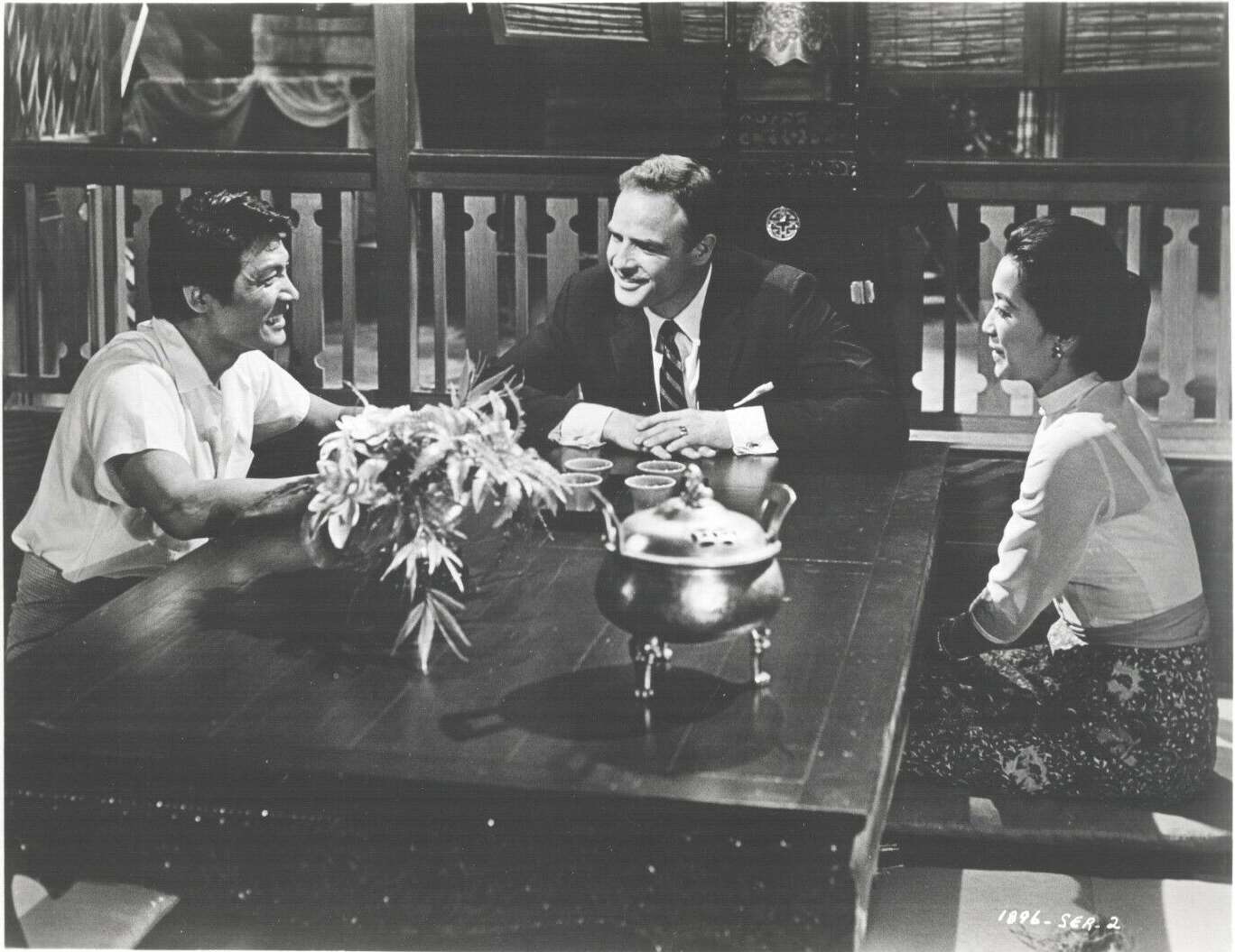
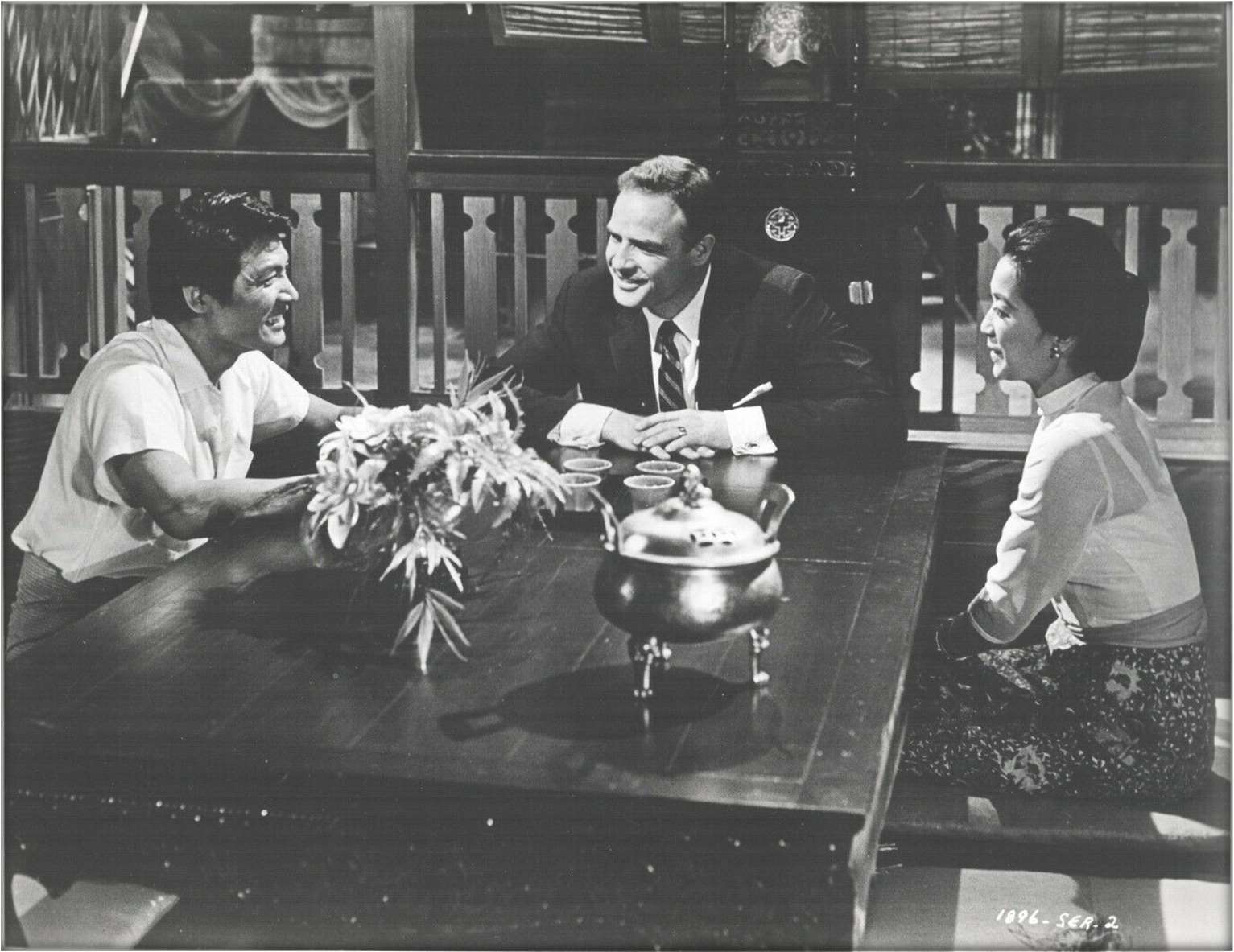
60
Reiko Sato, Marlon Brando, Arthur Hill, and Eiji Okada in The Ugly American (1963)
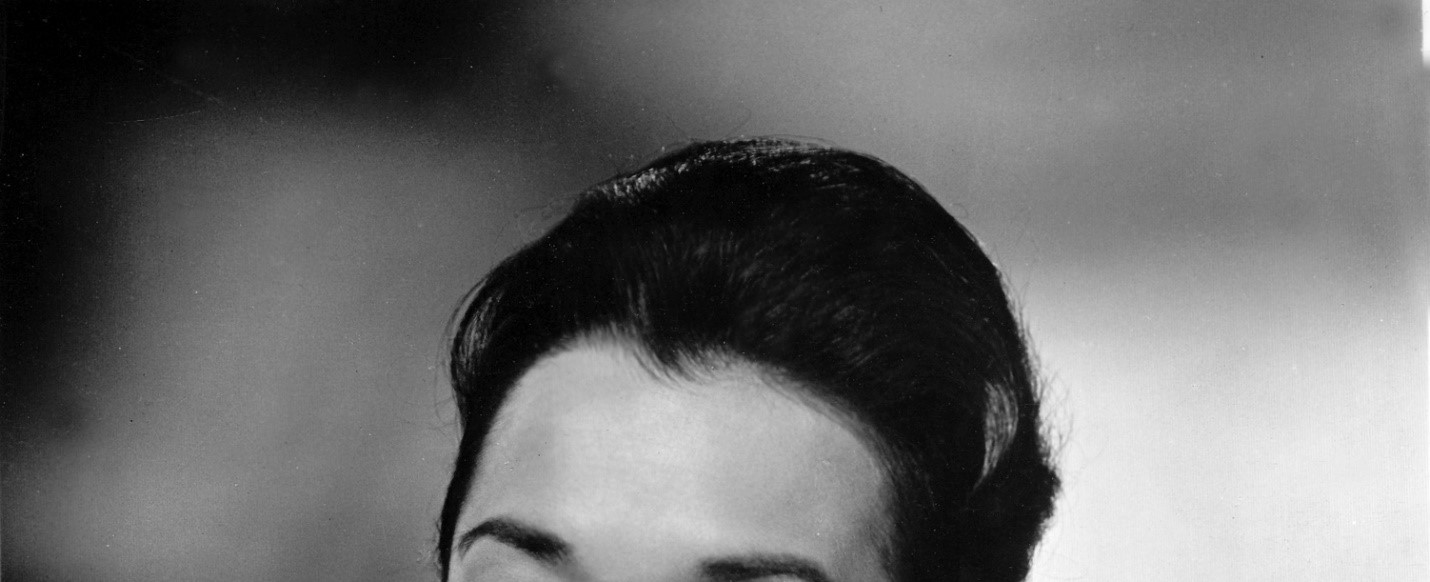
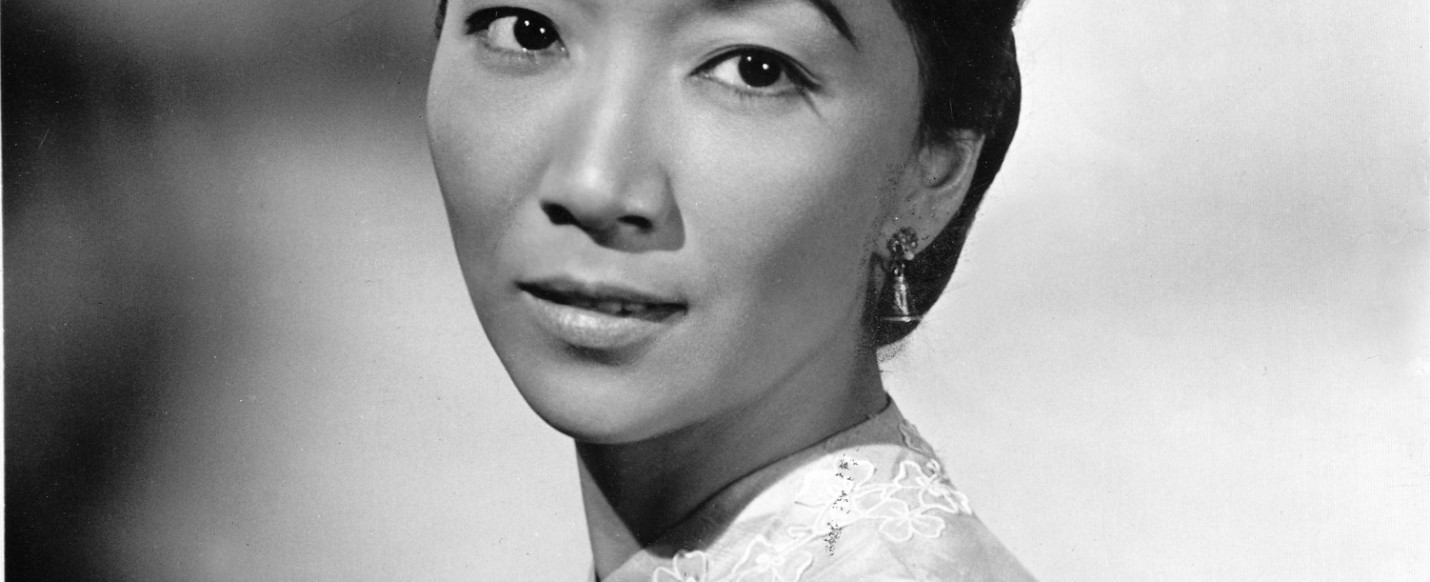
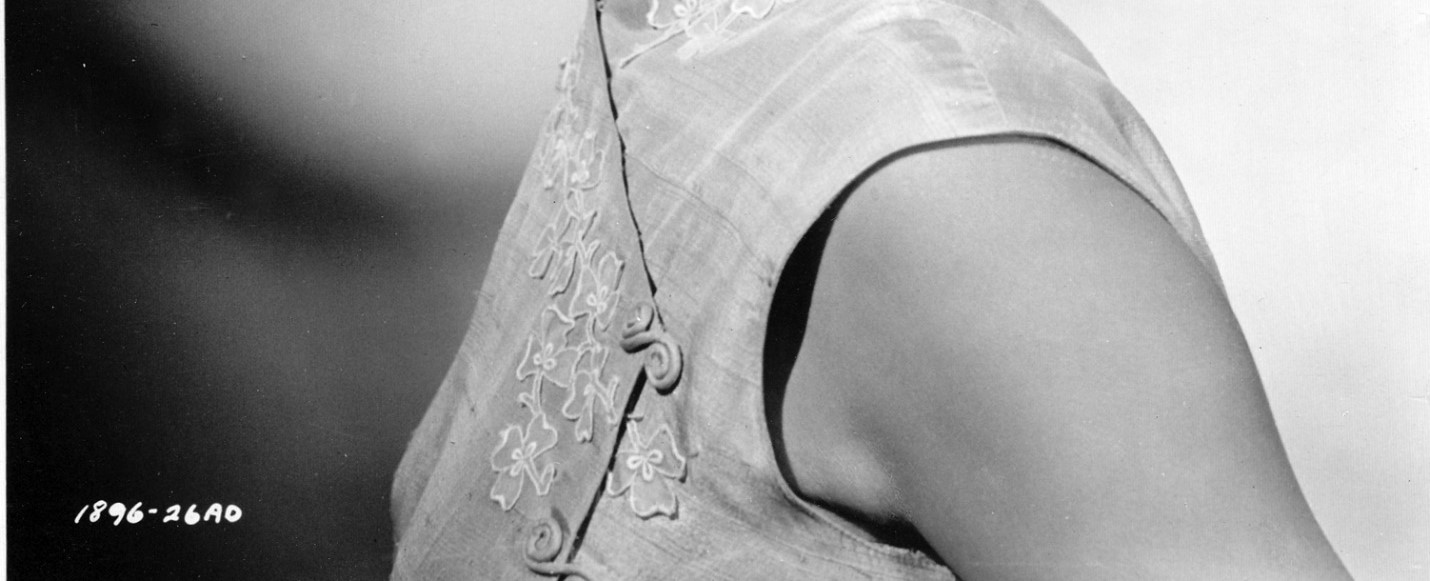






61
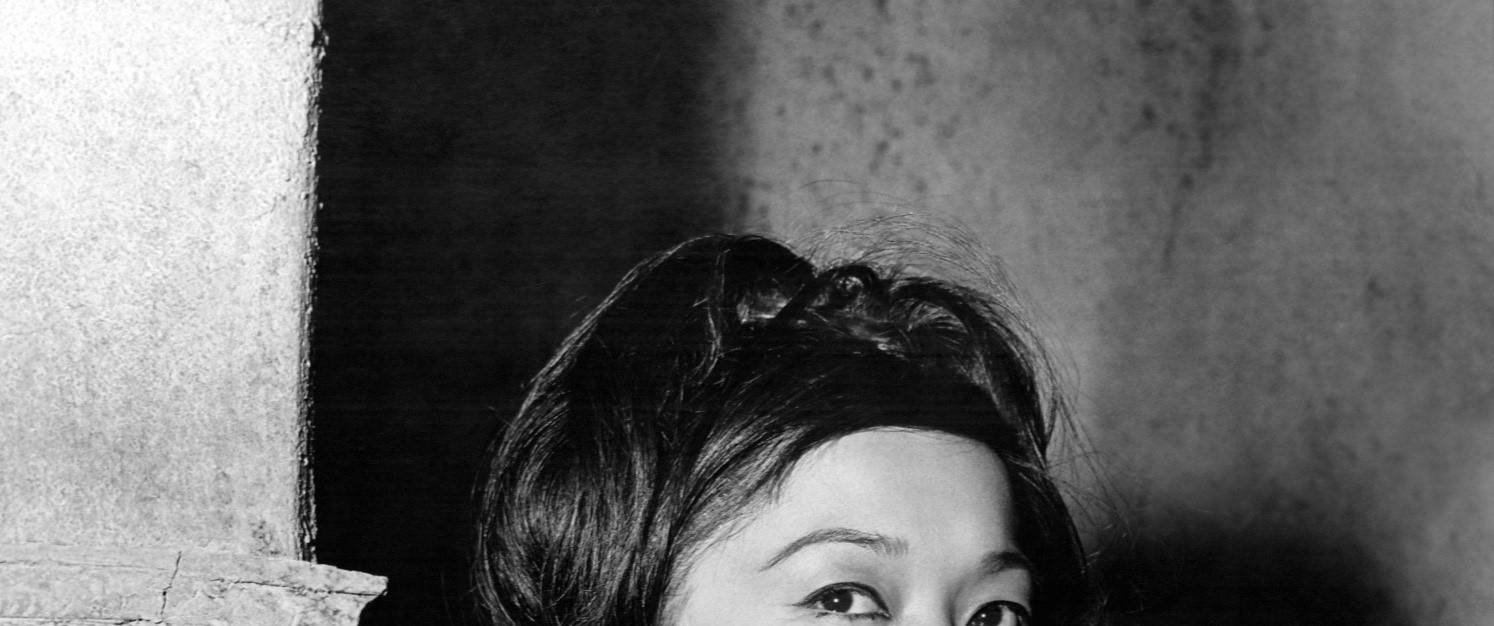
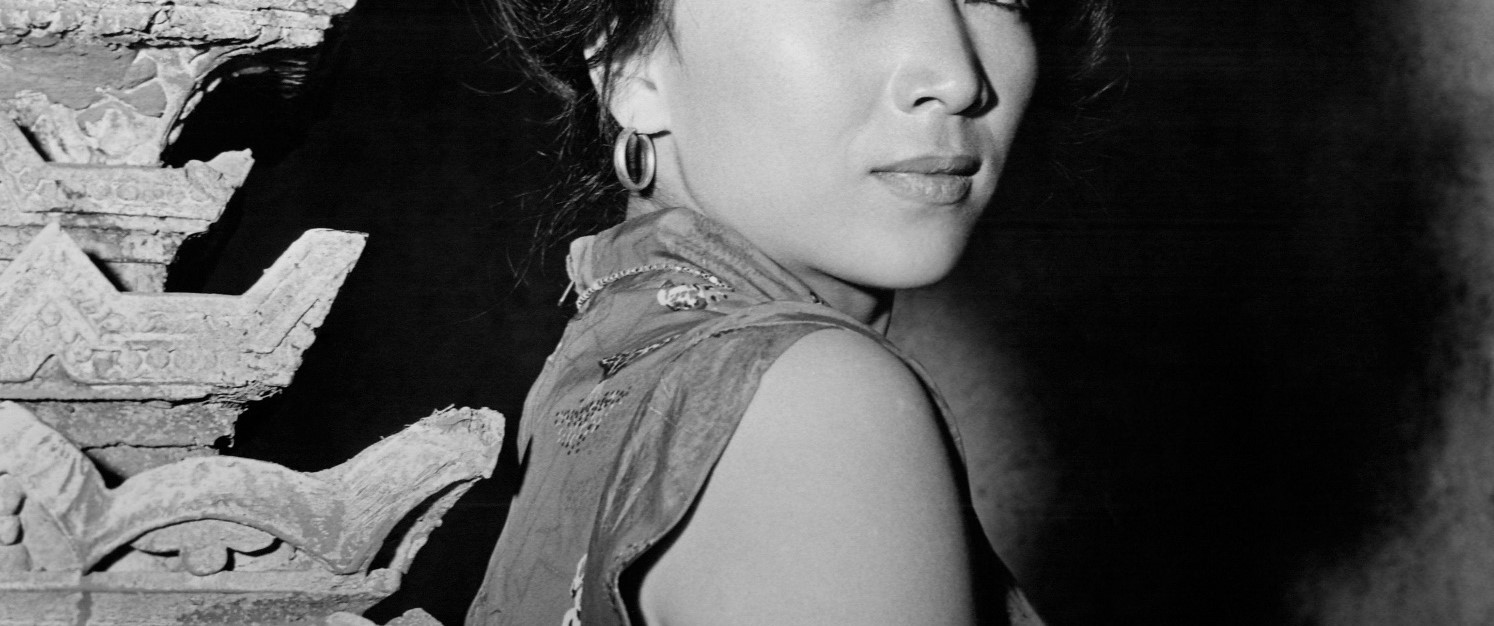
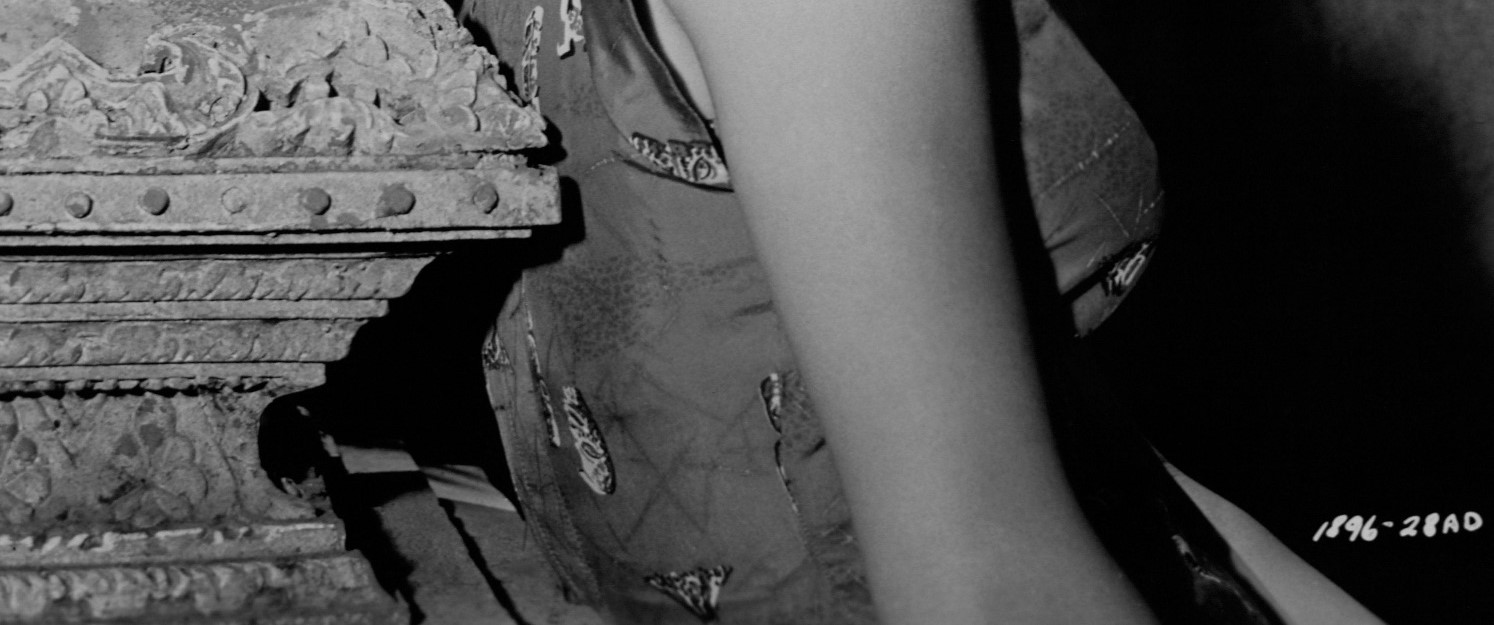





62
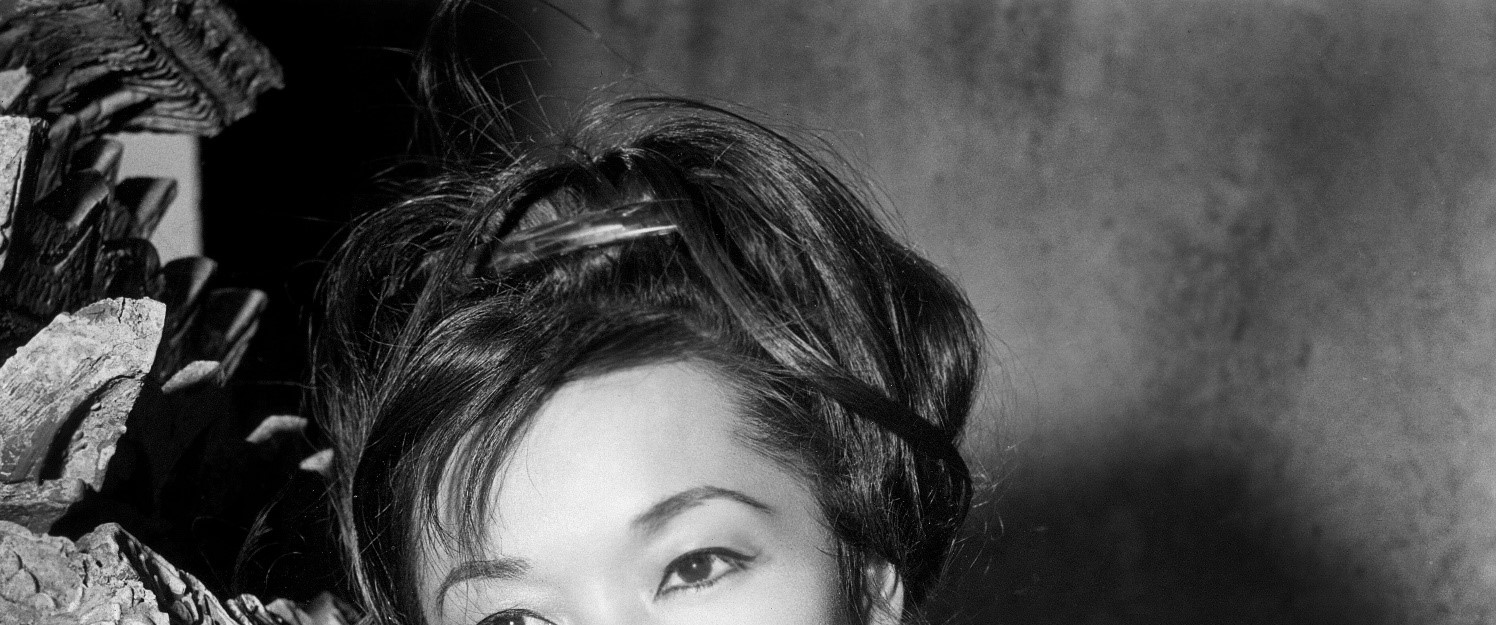
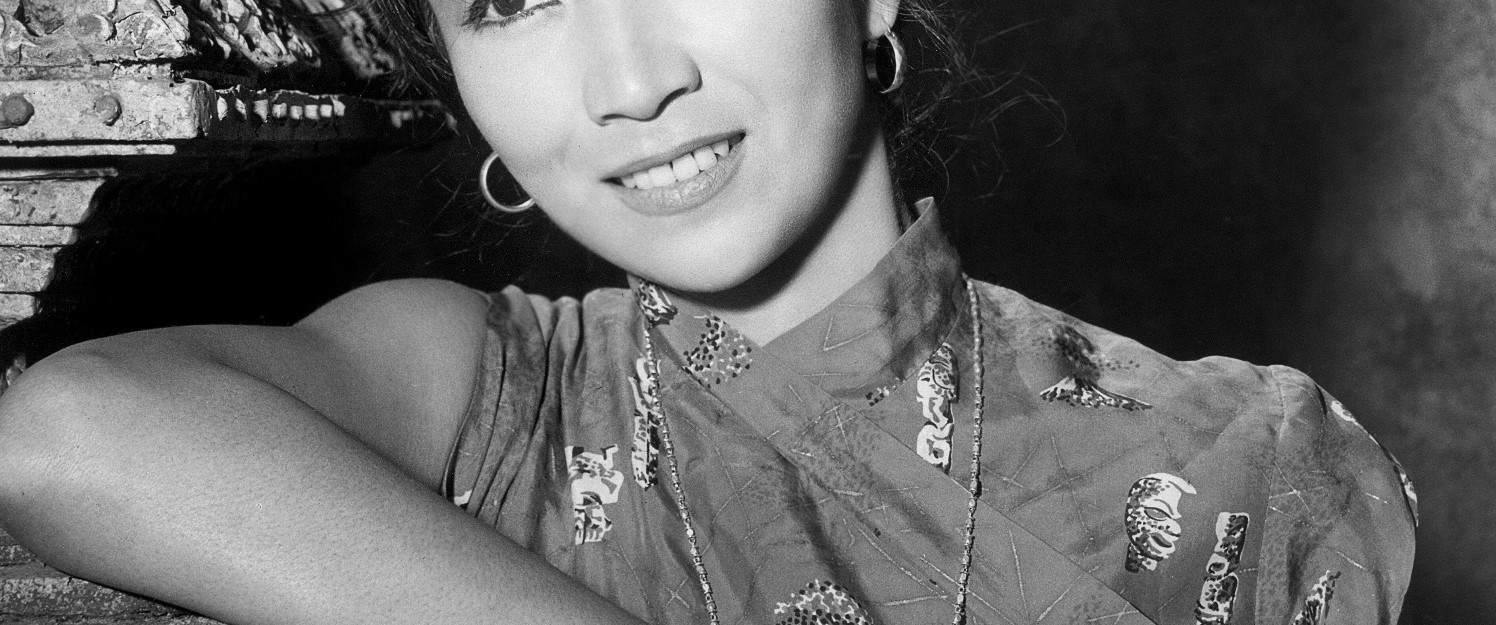
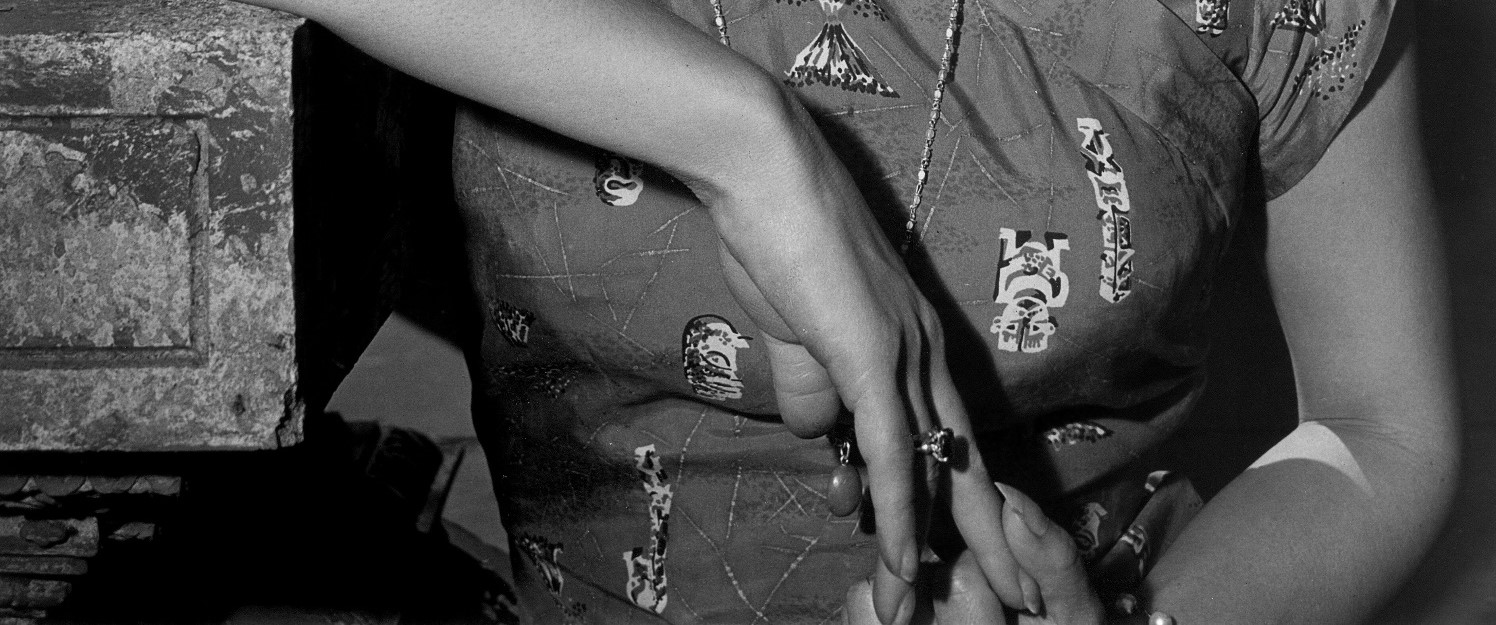





63
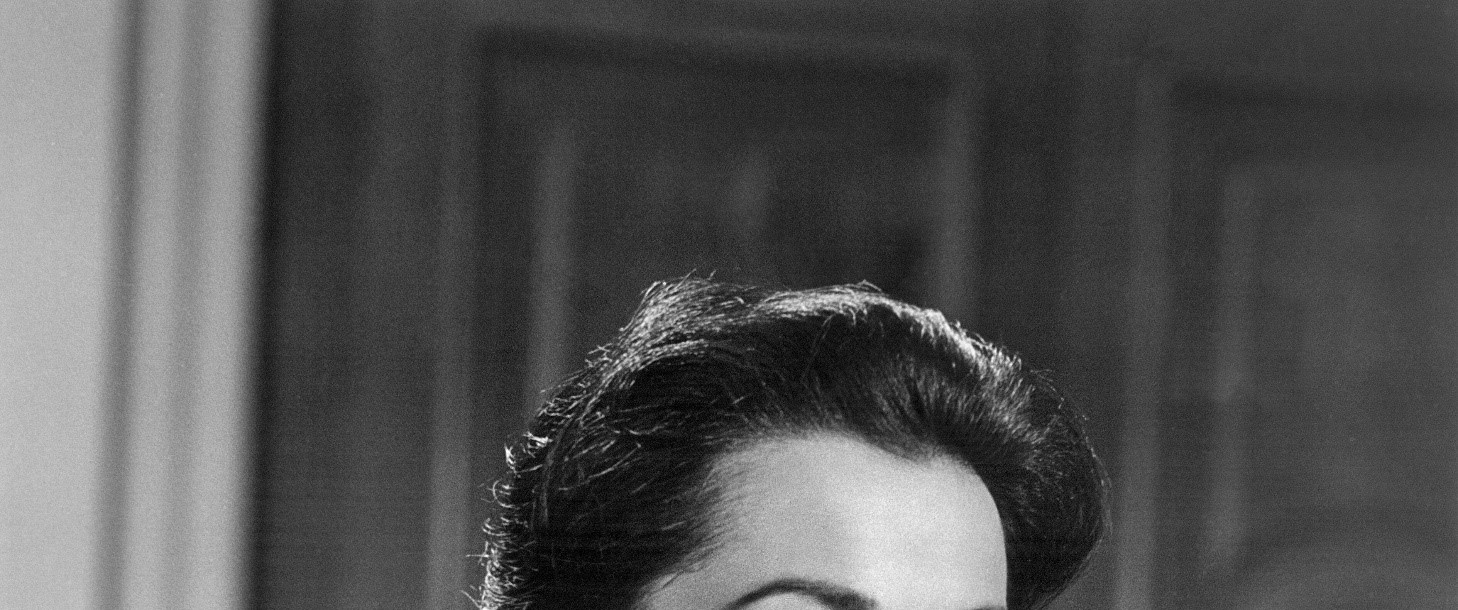
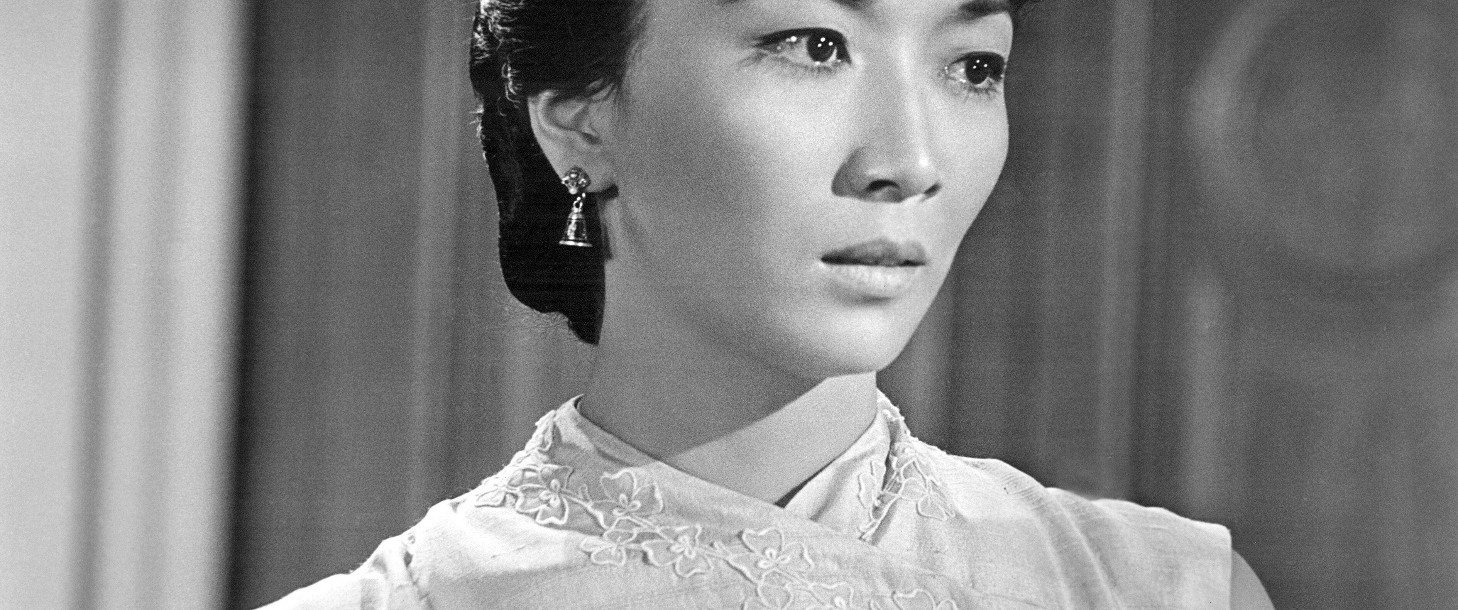
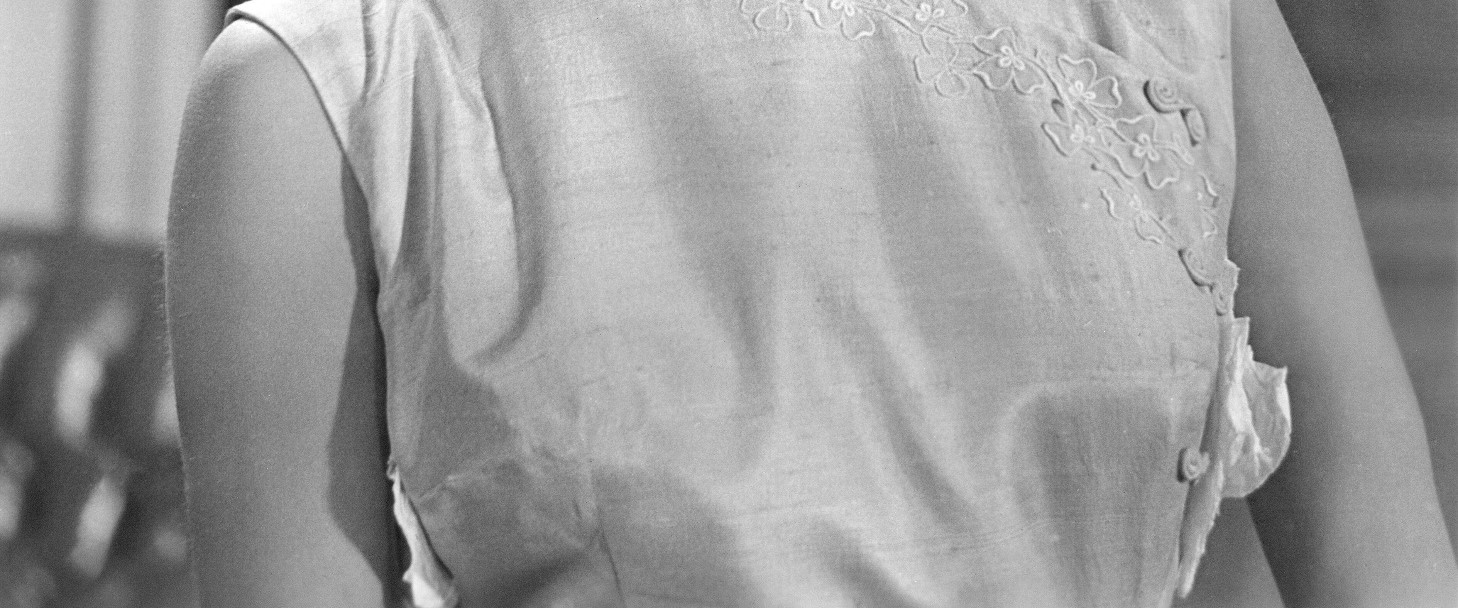





64
65
Post-Hollywood
After filming of The Ugly American (1963) concluded, Reiko was at a crossroads in her career. She realized that she didn’t desire fame, fortune, or glamour. She preferred simplicity. She had to support herself though.
She lived in her mother’s apartment complex briefly, but she grew weary of it. She returned to the stage shortly thereafter.
In 1963, she reprised her role again as the Princess of Ababu in a stage version of Kismet at the Los Angeles Civic Light Opera Playhouse. She did another role in The King and I at the same theater, as she struggled to
66
pay her bills. She didn’t want to continue relying on anyone, so she did as much onstage as she could. That’s what it was to her; it was a paycheck. Her co-star in both these productions, Nobuko Miyamoto, would say in her memoirs that Reiko was a rebel who had no ambition or love for show business. The fact was that she studied dance at such an early age that it was the easiest way for her to be independent. Her mother wanted her to be a star, but Reiko just wanted to be independent of her mother. She moved to Las Vegas, Nevada in 1964 to perform at the now-defunct Castaways Hotel and Casino, but returned to Hollywood shortly thereafter Nobuko Miyamoto, a friend, colleague, and protégé of hers was close with her during this difficult period. She described her fondly in
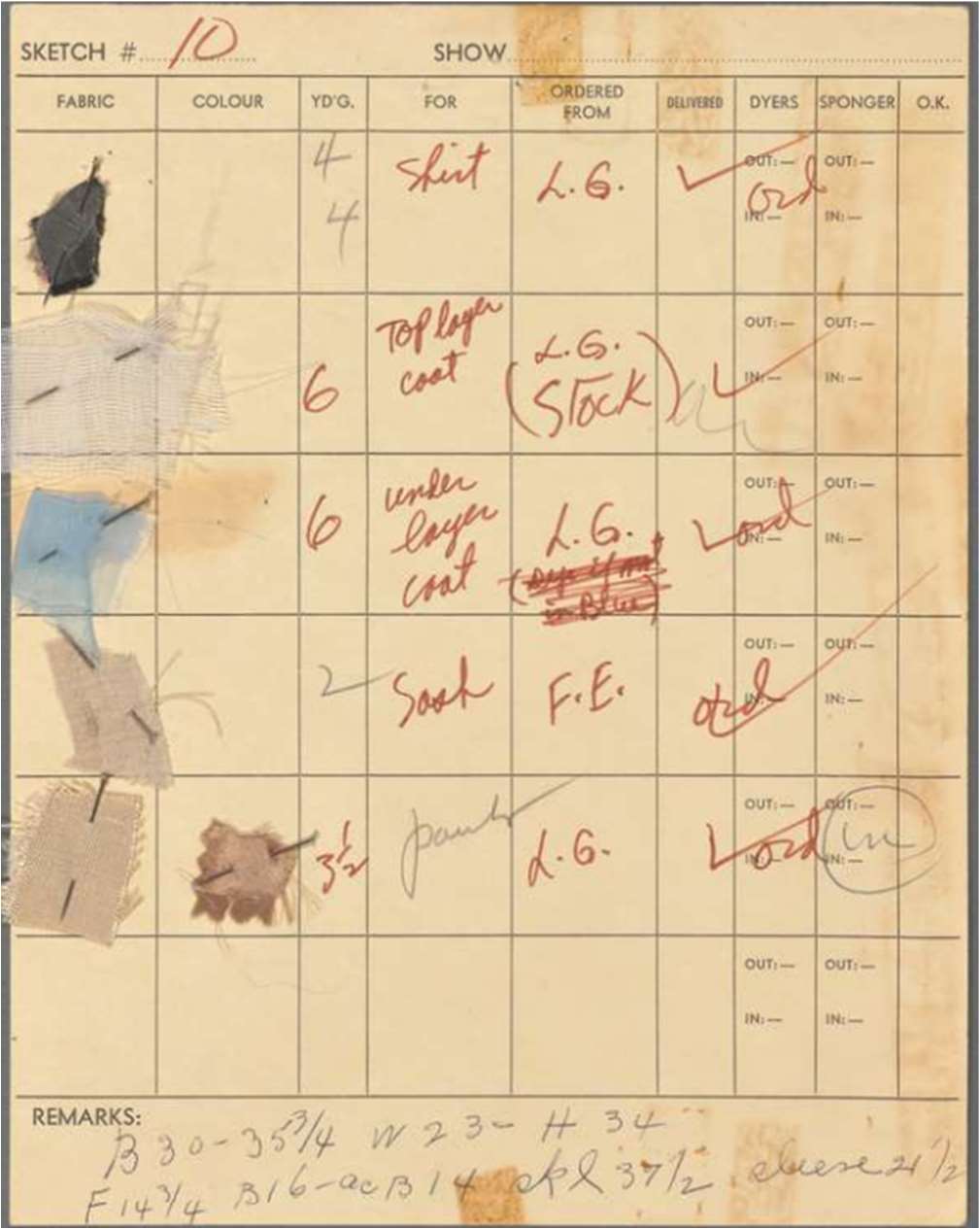
67
her memoir Not Yo' Butterfly: My Long Song of Relocation, Race, Love, and Revolution: The only person who
understood where I
was coming from was
Reiko Sato. She was
that sexy, beautiful
dancer I saw at the
NiseiWeek talent show
in Little Tokyo when I
was a kid. Now I was
dancing next to her.
Reiko thought that
Reiko Sato’s Costume Sketch she’d have a last bow
(designed by Willa Kim) for Chu Chan – 1966
after being cast for Chu
(Courtesy of the New York Public Library) Chem on Broadway in 1966. She was delighted to be reunited with friends Jack Cole and James Shigeta, but the production was cancelled because of frequent changes in its
68
cast and crew. In December 1967, she starred in Mata Hari at the National Theater in Washington D.C. It was a promising musical that was choreographed by her good friend Jack Cole, but was panned by critics and closed days later. It was back-to-back disappointment for Reiko in the span of two years.
A year later, she was cast for The Hirayama Family of Japan starring Carolyn Ogilvie, but the production folded. The constant failures were interrupted when she was hired as a featured dancer on the Bing Crosby Special: Making Movies, which was one of several successful specials starring The Crooner. It aired on October 23, 1968 on NBC. She was quite honored to meet such a legend as Bing Crosby, who was so exclusive that even his children -at times- couldn’t get ahold of him.
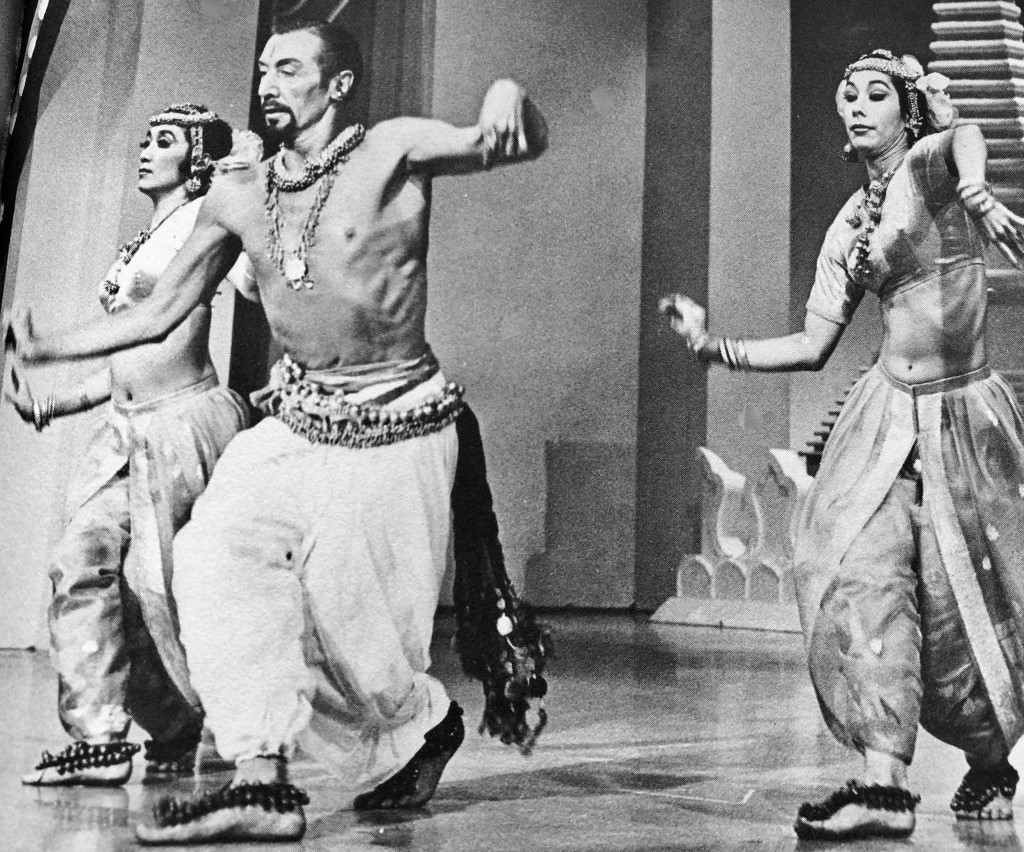



69
Reiko Sato, Jack Cole, and Nobuko Miyamoto on Hollywood Palace – 1965
(Courtesy of Nobuko Miyamoto) In 1970, she was a featured dancer of the Valentina Oumansky Dramatic Dance Ensemble in Hilo, Hawaii. This is where the gigs slowed down and the phone stopped ringing. She was approaching her 40’s, and she wasn’t being offered substantial roles anymore. Even though she aged -at least by the standards of show business- as a dancer,
70
she kept a youthful face and figure, with colleagues saying that she looked younger than she had during her days in Hollywood.
A midlife crisis ensued, and Reiko left to Mexico to find herself. This is where rumors began circulating among her peers. There were reports that she dated a Mexican boxer named Robes, whom she trained in tap dancing in the hopes that they could be a duo in Latin America. Others have written that she engaged in polygamy, marrying a man named Alphonse Curon while secret marrying another man named Bozo Miller months later.
She returned to Los Angeles, never confirming or denying the rumors of what happened south of the border. She reconnected with Marlon Brando, who helped her regain stability in her life. She then made her first
71
public appearance in months at Nisei Week, where she did choreography and served on the committee.
72
Later Years
A lot of Reiko’s income was given to her by Marlon Brando. She did various gigs for him, such as caretaking his island Tetiaroa and acting as a housekeeper and babysitter for his son Christian. These gigs began in the 1970’s after Reiko retired from performing. She acted as a manager and “guard” for Tahiti, greeting visitors, watching for intruders, ordering inventory, and calculating profits. She enjoyed it; it made her feel proud, and she was glad to being doing something where she could use her intellect. It proved to people that she was more than just a pretty face.
73
She never married though. She loved Marlon, even if their relationship devolved from romantic to platonic. There are some who believe that Reiko’s devotion towards him was based on desperation rather than admiration; Roger Vergin, a Lecturer at Pennsylvania State University who was friends with Marlon firmly believed this. He wrote Brando with His Guard Down in 1997, saying that “Reiko was a perfect example of someone who had felt the effect of Brando’s seductive process. Brando was all she had.”
There was some truth to that, as Reiko became reliant on him.
Eventually she grew bored, and her love for Marlon couldn’t prevent that. It was difficult to leave Tetiaroa unless planned in advance, and it became lonely when visitors were scarce. It could’ve been described as a high-
74
end prison by some. There was a horrifying incident where Marlon forgot to order supplies for the island, and food was running low. A rat infestation followed this, and Reiko was stranded for weeks.
Fortunately, a friend of Marlon’s arrived on the island and helped Reiko during her predicament. Roger Vergin who authored the previously mentioned Brando with his Guard Down said that Marlon’s plans included turning the island into a resort, but it never happened due to incidents with weather, finances, and mismanagement. In an excerpt from his book, he told Reiko’s wild story of Tetiaroa and the painstaking weeks that she spent there:
She [Reiko] left for Tetiaroa with Brando’s blessings and his promise to look in on her. A couple of Tahitian fishermen transported her
75
and a supply of provisions there in their boat.
However, there turned out to be a major flaw in her plan; she was depending on Brando.
As anyone who has ever worked with or waited for Brando could testify, his sense of time seldom coincided with the timing of the rest of the world. In this instance, it certainly did not coincide with the schedule that had been in Reiko’s mind.
Reiko had expected a boat to be back to check on her in a few days. She planned well her story of lonely days and scary nights on Tetiaroa. She pictured her return to Tahiti to a Brando grateful for her valiant effort and a little contrite for putting her through a gruesome ordeal. The few days passed and no boat came. A few more days and still no boat.
The days were indeed becoming lonely and
76
the nights scary. This was not the girl scout camping trip that she had expected.
Although she had taken a generous supply of provisions, the larder was diminishing. With an occasional coconut washing up on the shore and a fish in the lagoon, she was not about to starve, but she began to have worries.
What if she got sick? What if a rat bit her?
After a while she began to fear that a boat load of sex starved mercenaries would land on the island to have their way with her.
Weeks passed and no one came to check on her. Soon she almost began to think that it would not be quite so terrible if a boat load of sex starved mercenaries did land on the island to have their way with her. At least they would bring fresh provisions. As she wandered the sunbaked beaches in her pareau and bare feet, she would think of Robinson
77
Crusoe ever searching the empty horizon for signs of a sailing ship.
Her horizon was not empty. The mountainous Tahiti looked so tantalizingly close and yet was so far away. It was not a matter of just picking up a telephone and ordering a boat to take her home. Had that been possible, she would have been long gone.
The problem was that there was no means of communication. Brando’s priorities had not included Reiko’s safety.
As Reiko looked across the ocean to Tahiti in the moonlight, she would think about starting a big fire on the beach. That would bring someone to investigate. The sad truth was that Brando simply forgot about her.
Eventually, Brando did remember to check and eventually a boat did come.
78
It was after this unfortunate incident that she demanded to leave the island against Marlon’s wishes, it was what a rare -and almost unheard of- moment where she stood up to him. Reiko returned to Los Angeles, and Marlon hired her as an unofficial caretaker, secretary, and housekeeper at his estate on Mulholland Drive since he was often away doing interviews, traveling, etc.
Reiko’s experiences on Tetiaroa really changed her opinion of Marlon. When speaking with Roger Vergin at dinner, she told him, “You must watch out. Be wary of Marlon. He is spending a great deal of time trying to figure you out… he said that he knows how to control everybody else on the island, but he hasn’t figured out how to control you yet. It bothers him.” Months later, a reporter approached her and asked her
79
about the progress on turning Tetiaroa into a resort. Reiko told him, “It is all becoming a bad dream. Marlon is totally unbusinesslike.
He has no idea for figures. He’s impulsive. If he wants something, he goes and gets it without analyzing the best way to do it.”
Although there were a lot of benefits in being Marlon Brando’s close friend, there was baggage that came with it. Reiko realized this as she frequently dealt with his ex-wives, ex-girlfriends, and enemies. One such incident occurred in 1971 when a hostile Anna Kashfi (Marlon’s ex-wife) arrived at Marlon’s house to pick up some things. Reiko had been given strict orders not to let her in, and a confrontation ensued that had to be broken up by the police. Marlon urged Reiko to get a restraining order to avoid any more conflict.
Reiko was dragged into further drama when
80
Anna violated a custody agreement by taking Christian to Mexico with her, resulting in being questioned by authorities.
Reiko wanted more privacy from Marlon, so he built her a house behind his estate. Reiko loved it. She enjoyed a simple, minimalistic lifestyle. She didn’t have -nor did she want- a lot of furniture, and her bedding was a mere futon. She spent her days in a routine where she’d do ballet, visit with friends, and appear at events and protests related to Asian-American rights. She met wonderful people during this period. One such person was Larry Hama, who was an animator know for creating G.I Joes. Although they were in different sides of the entertainment industry, they shared a common goal of outreach to the
81
Asian-American community:
She [Reiko] was at every event I can remember. Whenever there was a protest, venue, or parade, she was there. She made it clear that Asians deserved opportunity in the arts. We were and still are one of the most marginalized groups in Hollywood, and she was a victim of that. She was beloved by many people. It was her personality that people enjoyed. She had a lot of male friends too, which was unusual for women in those days… Marlon Brando, Wally Cox, Scott Brady… she knew them all, and would often go to bars with them. She was a lot of fun.
Since Christian Brando was grown and no longer needed a sitter, Reiko spent her days alone at Marlon’s estate. Her responsibilities dwindled, and she devoted time to well-deserved leisure. Marlon rented a house for her
82
nearby so that she could have some sense of independence. It would be her final residence.
It was a rare period where she felt at peace.
She was happy, content, and fulfilled.
On May 3, 1981, Reiko’s landlord stopped by after receiving a message from Marlon to check on her since nobody heard from her for days. He walked in and saw that she was on the floor suffering from what seemed to be a seizure. Her landlord -who naively called his Psychologist before coming to his senses-called for an ambulance, and Reiko was rushed to Cedars-Sinai Medical Center. Her family was called, and Marlon drove to Los Angeles to be by her side.
Alice Marchak, Marlon’s assistant who resides in Newport Beach, liked Reiko a lot. She remembered the concern that he had for his
83
longtime companion:
I picked up the telephone and a concerned Marlon asks me if I’ve heard from her
[Reiko]. Hours later, he bursts through the door breathless and frantic. He tells me to find her. I proceed to call her landlord and a few of her friends to do a welfare check. I always wondered what her cause of death was. She was so young and healthy.
Nobody wanted to let Reiko go. Marlon, Koji, and Chieko spent days at her side while she lay comatose. Marlon was more than willing to pay for the life support if there was any hope of her awakening, but that became less likely each passing day. After speaking with doctors, her family decided to end life support.
Reiko never wanted to be a burden on anyone, and she wouldn’t have wanted to remain on
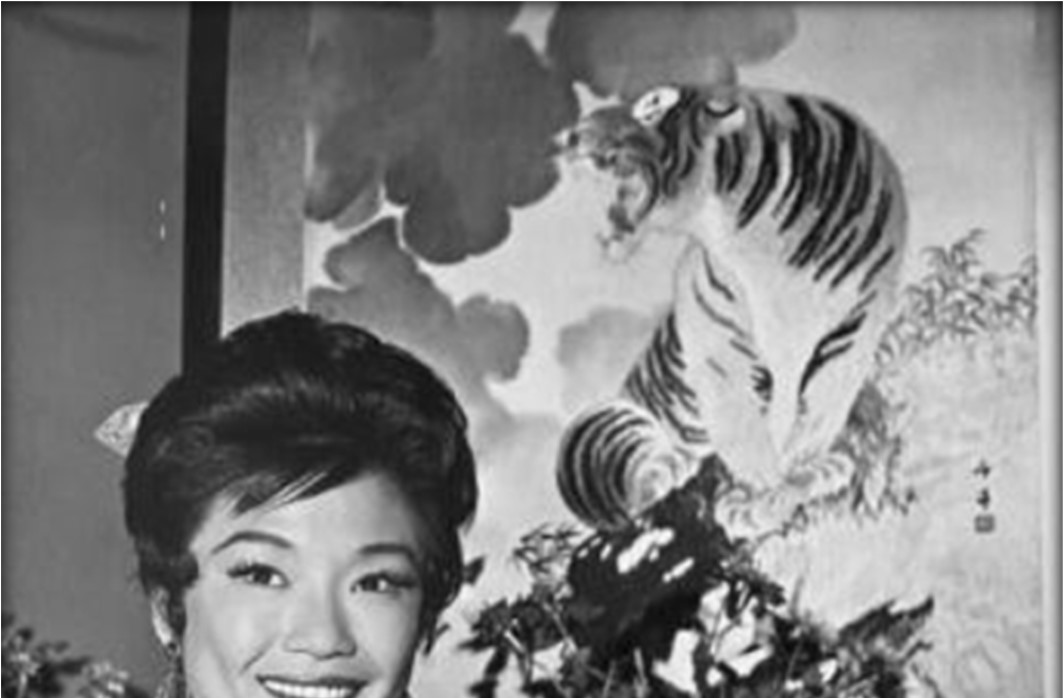
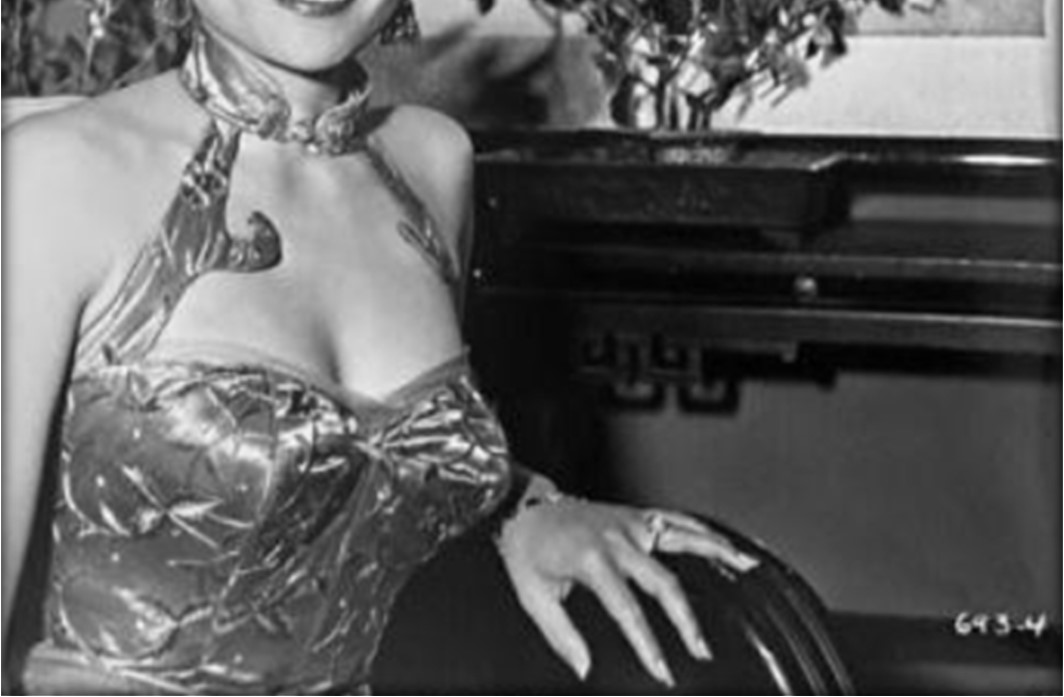
84
life support unless there was hope of recovery.
Reiko Sato died on May 28, 1981 at the age of 49 in Los Angeles, California.
In honoring her wishes,
there was no obituary
published. There was an
intimate funeral that
included her family,
friends, and co-stars like
Nancy Kwan and Nobu
McCarthy, with Marlon
Brando giving the
eulogy while holding
back tears of sorrow. He
didn’t perform onscreen
for almost a decade
afterwards.
85
Reiko’s being the frugal person she was, requested cremation, with her ashes being scattered at a Buddhist temple where her father studied. Marlon scattered some ashes on Tahiti and -like he did with his friend Wally Cox’s ashes- kept some. Feeling that Reiko reserved a more-permanent remembrance, Marlon commissioned a tombstone to be placed at Forest Lawn Memorial Park in Hollywood Hills. It reads
“In Loving Memory”.
There was a lot of speculation regarding her premature death. Friends believed that her habit as a smoker was a factor. Noel Robin believed that it was a result of a fall that she suffered months prior while bathing. Shortly after Reiko’s funeral, Marlon penned a letter to his close friend George Englund. In it, he
86
summarized his feelings for her: Just came from funeral services for Reiko and wanted to spill a little, I guess. She was so naturally gentle and warming - what a comic design we're obliged to fit ourselves into. The absurd posture of belief in the sweetness of life seems impossible to hear sometimes.
I just saw a little life surrounded with a sleep” and that was all—not more than eleven people to fare her well—of those no one really loved her and maybe four were really touched by the ending, She drowned quickly on a soft and balmy fair day in a pretty little pool of water. That was the end of thirty one funny little bittersweet years. Surely her loving was all that could’ve mattered—the only sensible course is the senseless. I don’t
87
understand our petulant insistence on making life significant.
Since Reiko’s death, several books have been written describing her relationship with Marlon Brando. Their relationship has often been depicted as one of numerous that Marlon had. This couldn’t be further from the truth.
Marlon and Reiko shared a loving and often platonic bond, which was shown by Reiko’s refusal to marry -or date- other men despite countless offers. One of Marlon’s girlfriends, Patricia Quinn, recalled a dinner where she and several of his girlfriends were invited. She saw that Marlon gave the most attention and admiration towards Reiko as soon as she entered the dining room. Patricia would recall this event, saying “it was definitely Reiko’s night.”
88
Reiko Sato is known by audiences as Helen Chao in Flower Drum Song (1961). It’s sad, but true that she is one of Hollywood’s lesser-known talents. Her friends, family, and colleagues remember her not as an actress and dancer from Hollywood, but as a kind, unique, and down-to-earth human being.
89
Filmography
On the Town (1949) - Dancer Mother Didn’t Tell Me (1949) - Suki Woman on the Run (1950) - Suzie Target Hong Kong (1953) - Dice Girl House of Bamboo (1955) - Charlie’s Girl Kismet (1955) - Princess of Ababu Hell to Eternity (1960) - Famika Flower Drum Song (1961) - Helen Chao The Ugly American (1963) - Rachani
90
Stage
Starlift - Dancer | 1951
The Teahouse of the August Moon - Lotus Blossom |
1955
Kismet - Princess of Ababu | 1953-1955
Destry Rides Again - Ming Li | 1959-1960
The King and I - Dancer
Kismet - Princess of Ababu | 1962
Kismet - Princess of Ababu | 1965
Chu Chem - Pink Cloud | 1966
Mata Hari – Carlotta | 1967
91
Television
Your Jeweler’s Showcase/Screen Associate Films Juice Man | November 18, 1952
The Anna May Show
Various Episodes | Dancer - 1952
Johnny Midnight
The Tokyo Doll | Mitsu Kyoto - April 29, 1960
Hawaiian Eye
Made in Japan | Cashier - January 4, 1961
The Hollywood Palace
Various Episodes | Dancer - 1965
Bing Crosby Special: Making Movies Television Special | Dancer - October 18, 1956
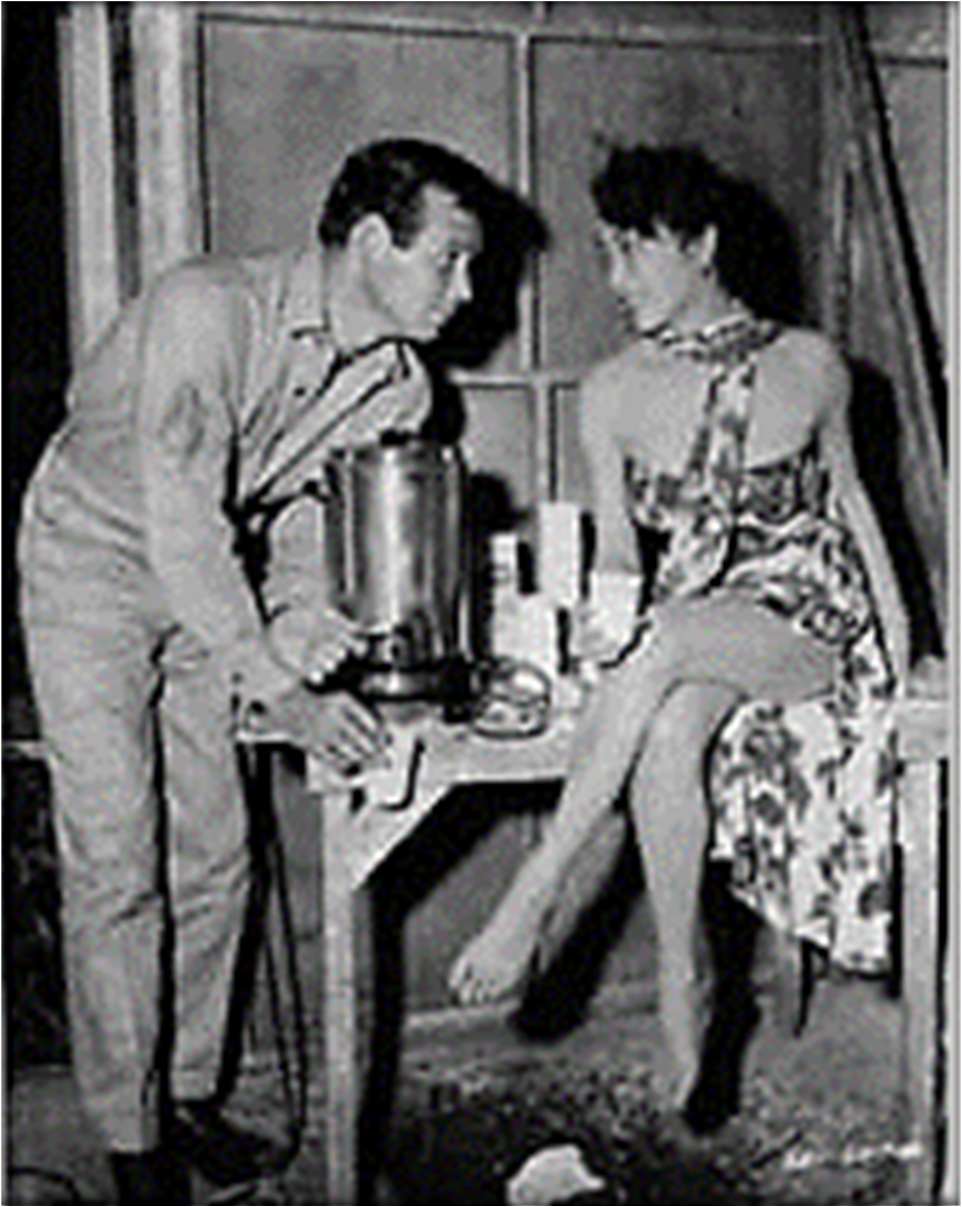
92



















































































